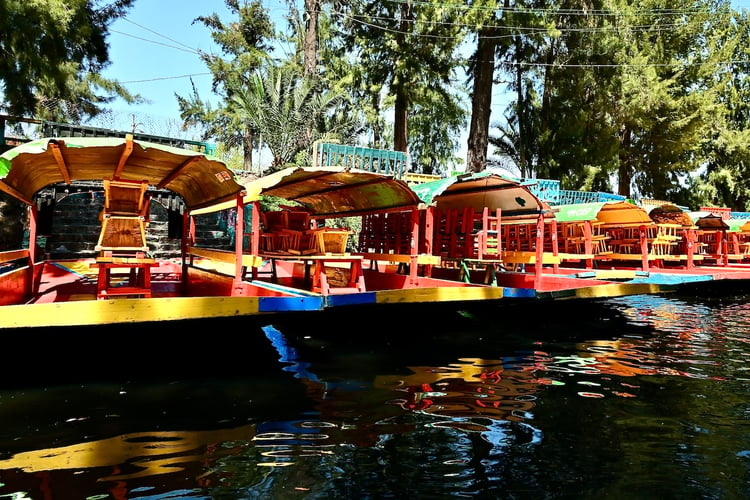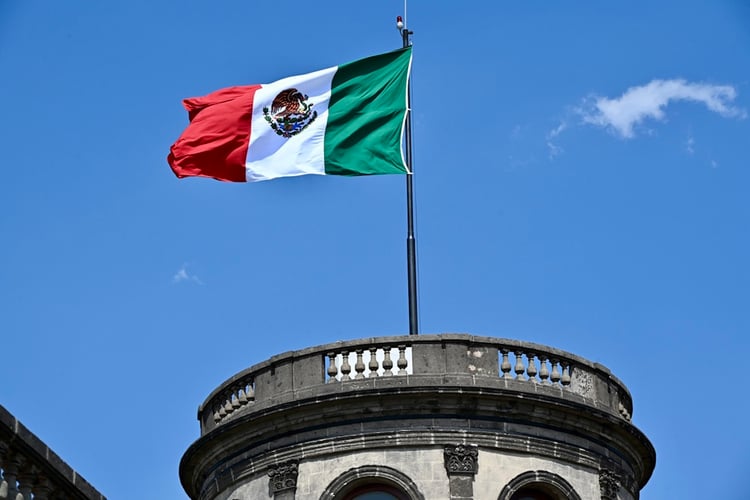
Mexico City Travel Guide
CDMX • Ciudad de México
So you're planning a trip to Mexico City? Dive into our comprehensive Mexico City travel guide covering everything you need to know about Mexico's capital and the must-do experiences awaiting you.
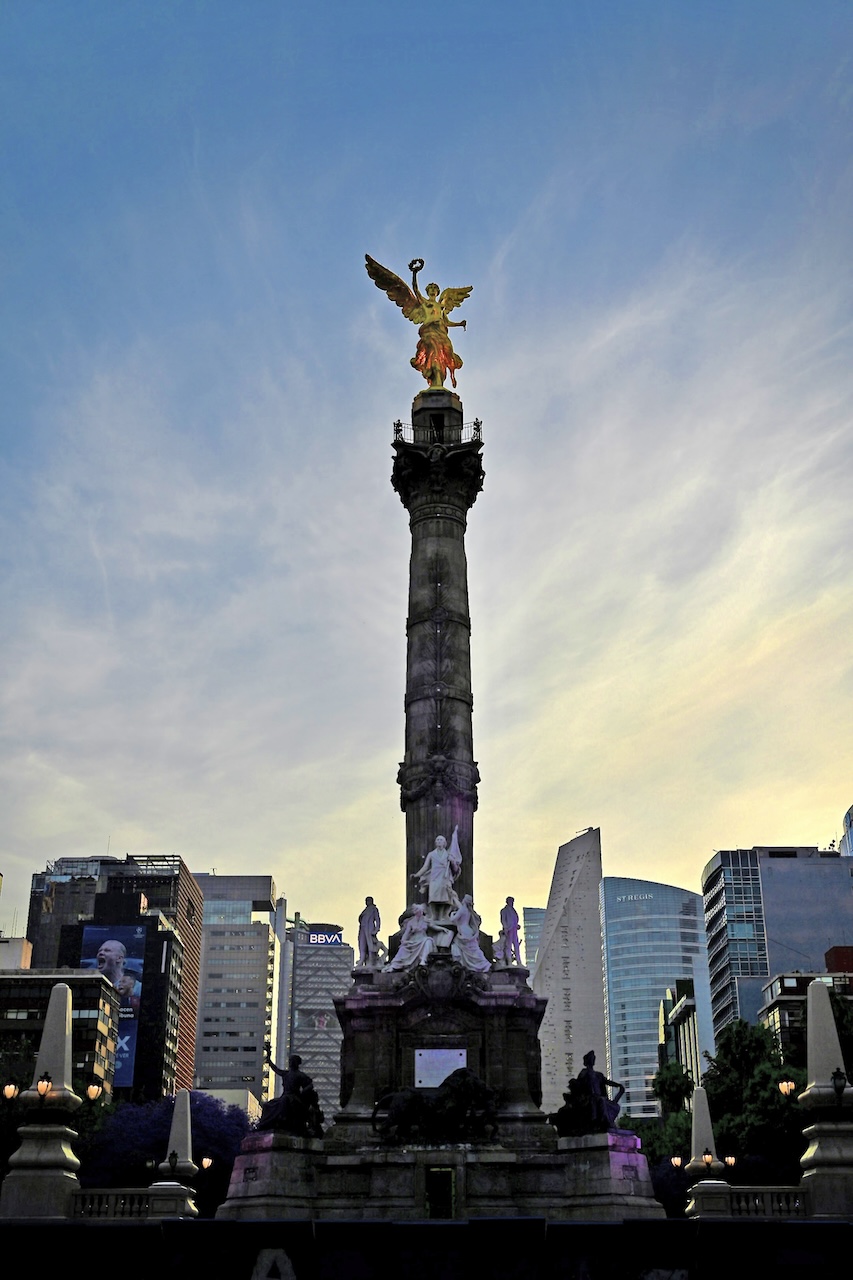
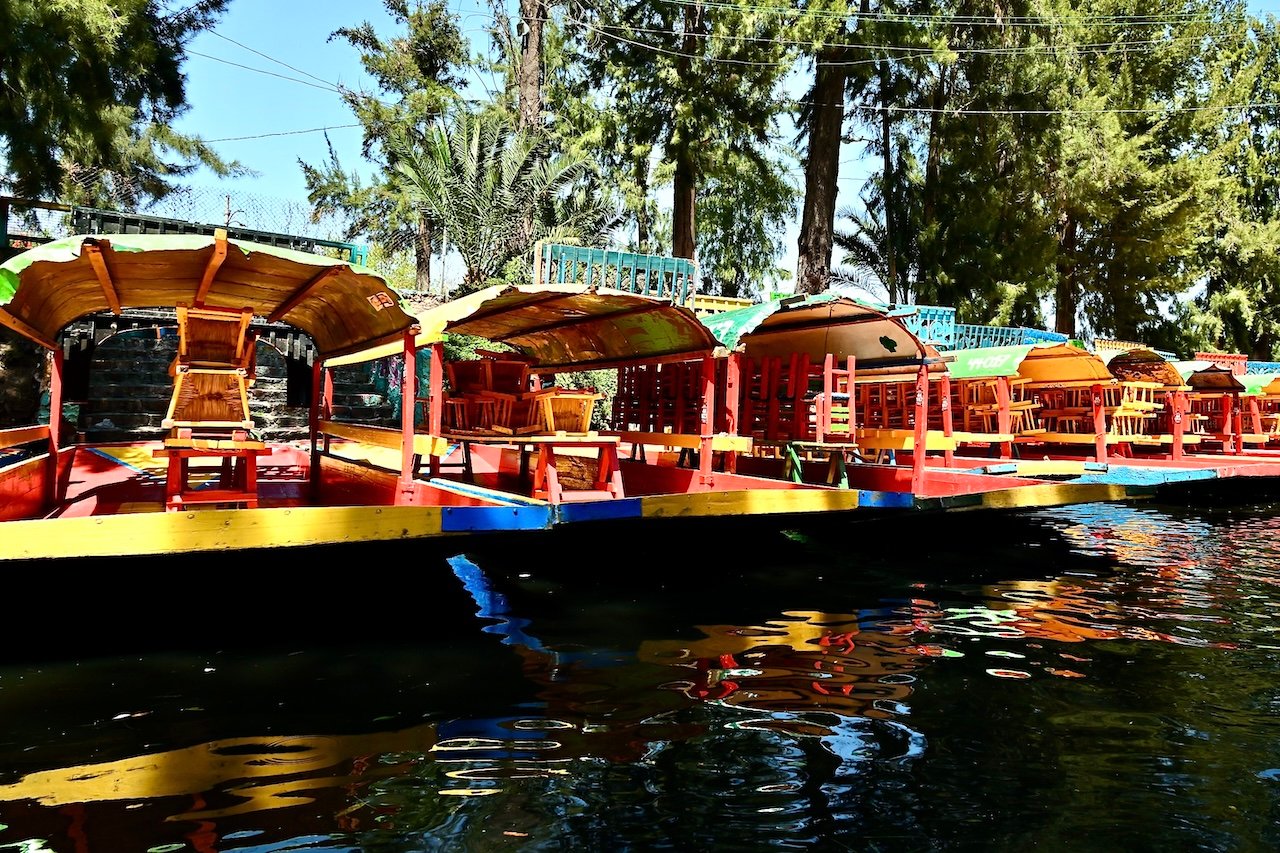
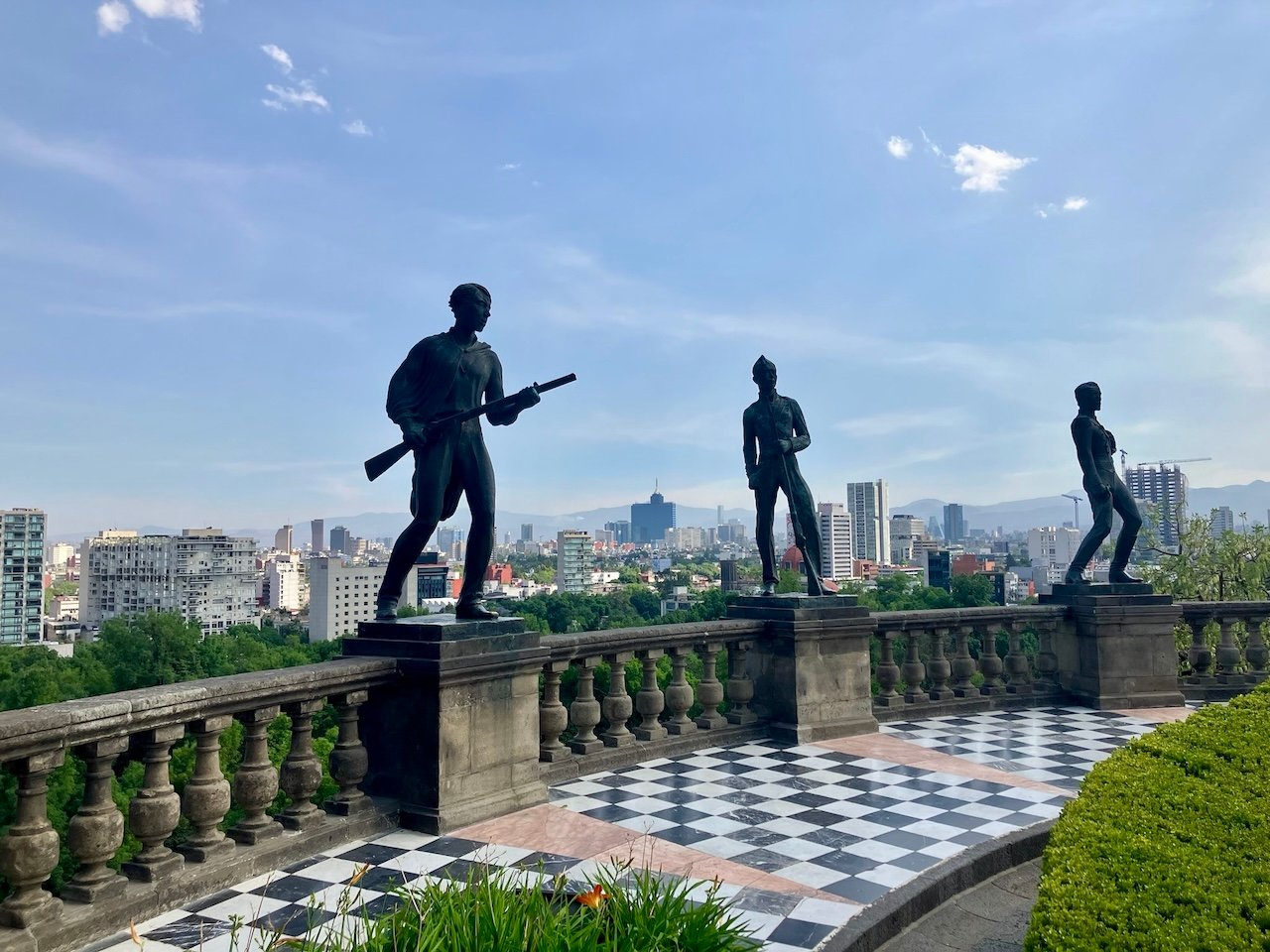
Mexico City Travel Guide
An Introduction
Mexico City (CDMX), the storied capital of Mexico, offers a captivating blend of ancient history and modernity. Originally founded by the Aztecs around 1325 as Tenochtitlan, the city was built on an island in the middle of Lake Texcoco. Tenochtitlan served as the capital of the Aztec Empire until its conquest by the Spanish in the 16th century.
Following the Spanish conquest, Mexico City became the capital of New Spain and a center of colonial power in the Americas. The Spanish rebuilt the city atop the ruins of Tenochtitlan, incorporating elements of both indigenous and European architecture. Today, remnants of this colonial past can be seen in the historic center, with its grand plazas, cathedrals, and colonial-era buildings.
Mexico City is also home to a wealth of cultural attractions and landmarks. The UNESCO-listed historic center, known as Centro Histórico, is a treasure trove of history, boasting landmarks such as the Metropolitan Cathedral and the National Palace. Nearby, the Chapultepec Park houses the Chapultepec Castle, once a royal residence and now a museum offering panoramic views of the city.
Art enthusiasts will find much to admire in Mexico City, from the renowned works of Frida Kahlo at the Frida Kahlo Museum and famed murals of Diego Rivera throughout the city, to the contemporary masterpieces at the Museo de Arte Contemporáneo. The city's vibrant street art scene adds an extra layer of creativity to its urban landscape.
But Mexico City isn't just about history and culture—it's a city filled with energy and diversity. Its neighborhoods, or "colonias," each have their own distinct character, from the bohemian vibes of Coyoacán to the trendy shops and restaurants of Roma and Condesa. The city's culinary scene is equally eclectic, offering everything from traditional street food to high-end gastronomy.
Whether you're exploring its ancient ruins, indulging in its culinary delights, or simply soaking up its vibrant atmosphere, Mexico City offers an unforgettable journey through time, culture, and tradition. To help you get ready to be captivated by the spirit of this extraordinary city, here are some other interesting facts about CDMX.
- Mexico City is one of the highest capitals in the world, sitting at an altitude of around 7,350 feet (2,240 meters) above sea level.
- Mexico City is a cultural hub, home to numerous museums, galleries, theaters, and concert halls. It boasts more than 150 museums, including the National Museum of Anthropology, one of the most important archaeological museums in the world.
- With a population of over 22 million people, Mexico City is one of the largest and most populous cities in the world.
- Many of Mexico City's streets follow the layout of the Aztec city of Tenochtitlan, with the main plaza, known as the Zócalo, occupying the same central location.
Mexico City Travel Guide: Quick Tips
Mexico City Travel Guide: Can't Miss Attractions
Embark on a journey through Mexico City's essential sights, ranging from the cultural wonders of the National Museum of Anthropology and Templo Mayor Museum to the bustling Zócalo square, the majestic Chapultepec Castle, the vibrant Frida Kahlo Museum, and a myriad of other enchanting landmarks that collectively embody the multifaceted charm of this capital city.
We've highlighted all the attractions we visited and adored with the universal symbol of love, ♡.
- National Museum of Anthropology (Museo Nacional de Antropologia): ♡ The National Museum of Anthropology in Mexico City is one of the world's most important museums dedicated to the cultural heritage of Mexico, featuring extensive collections of pre-Columbian artifacts and exhibits that explore the country's rich indigenous history and traditions.
- Chapultepec Castle (Castillo de Chapultepec): ♡ Chapultepec Castle is a historic castle perched atop Chapultepec Hill, serving as a former imperial residence, presidential palace, and now housing the National Museum of History, offering panoramic views of the city and showcasing Mexico's rich cultural and political heritage.
- Basilica of Our Lady of Guadalupe (Insigne y Nacional Basílica de Santa María de Guadalupe): ♡ The Basilica of Our Lady of Guadalupe in Mexico City is one of the most important Catholic pilgrimage sites in the Americas, housing the revered image of the Virgin of Guadalupe and attracting millions of visitors annually to pay homage to Mexico's patron saint.
- Frida Kahlo Museum (Museo Frida Kahlo - La Casa Azul): The Frida Kahlo Museum, also known as the Casa Azul (Blue House in English), is the former home of the iconic Mexican artist Frida Kahlo, now transformed into a museum showcasing her life, art, and personal belongings, providing visitors with insight into Kahlo's fascinating life and creative spirit. Tickets for the Frida Kahlo Museum typically sell out weeks in advance. Secure your spot in advance by booking your admission on the Museo Frida Kahlo website.
- Palacio de Bellas Artes: The Palacio de Bellas Artes in Mexico City is a stunning cultural center renowned for its exquisite Art Nouveau and Art Deco architecture, hosting a diverse array of artistic performances and exhibitions, including ballet, opera, theater, and visual arts, showcasing Mexico's vibrant cultural heritage. The Palacio de Bellas Artes is also home to a mural gallery on its second floor, featuring murals from some of Mexico's most famous artists including Diego Rivera, Roberto Montenegro, David Alfaro Siqueiros, and José Clemente Orozco.
- Teotihuacan: ♡ Teotihuacan, located near Mexico City, is an ancient Mesoamerican city known for its monumental pyramids, including the Pyramid of the Sun and the Pyramid of the Moon, offering visitors a captivating glimpse into the architectural and cultural achievements of pre-Columbian civilizations.
- Zócalo: Zócalo, the main square in Mexico City, is a historic and cultural epicenter surrounded by architectural landmarks, including the Metropolitan Cathedral and the National Palace, serving as a hub for events, celebrations, and gatherings, embodying the heart and soul of the city.
- Templo Mayor Museum (Museo del Templo Mayor): ♡ The Templo Mayor Museum in Mexico City showcases the archaeological remains of the Great Temple (Templo Mayor) of the Aztec capital, Tenochtitlan, providing visitors with insight into the religious beliefs, rituals, and urban life of the ancient Aztec civilization.
- Floating Gardens of Xochimilco: The Floating Gardens of Xochimilco in Mexico City are a UNESCO World Heritage Site and a unique cultural attraction, where visitors can cruise along picturesque canals in colorful trajineras (traditional gondola-style boats), surrounded by lush vegetation and lively mariachi bands, providing a glimpse into Mexico's rich history and traditions.

Mexico City Travel Guide: Landmarks
Zócalo
Zócalo, the main square in Mexico City, is a historic and cultural epicenter surrounded by architectural landmarks, including the Metropolitan Cathedral and the National Palace, serving as a hub for events, celebrations, and gatherings, embodying the heart and soul of the city.
Paseo de la Reforma
Paseo de la Reforma is one of the most iconic and important avenues in Mexico City, renowned for its historical significance, architectural landmarks, and cultural vibrancy. Originally designed in the 19th century by Emperor Maximilian I to emulate the grand boulevards of European capitals, like the iconic Champs-Élysées in Paris, Paseo de la Reforma stretches for approximately 9 miles through the heart of the city, from Chapultepec Park to the historic center (Centro Historico). Along its tree-lined boulevards, visitors can admire a variety of architectural styles, including neoclassical, art deco, and modernist buildings. Paseo de la Reforma is also home to numerous monuments and statues commemorating important figures and events in Mexican history, such as the Angel of Independence (El Ángel de la Independencia) and the Diana the Huntress Fountain (Fuente de la Diana Cazadora). The avenue is a bustling hub of activity, lined with shops, restaurants, and cultural institutions, making it a popular destination for both locals and tourists alike.
Monumento a la Revolución
The Monumento a la Revolución (Monument to the Revolution) in Mexico City is an iconic landmark that commemorates the Mexican Revolution of the early 20th century. Located in the heart of the city, the monument features a towering dome surrounded by four impressive columns, symbolizing the ideals of the revolution: liberty, justice, law, and reform. Originally intended to be the Legislative Palace, construction was halted during the revolution, and the structure was later repurposed as a monument. Visitors can ascend to the top of the dome for panoramic views of Mexico City or explore the museum housed within the monument, which provides insight into the history and significance of the revolution. Surrounding the monument is the Plaza de la República, a lively square featuring sculptures, fountains, and gardens, making it a popular gathering spot for locals and tourists alike. The Monumento a la Revolución serves as a powerful symbol of Mexico's struggle for independence and social justice, honoring the legacy of those who fought for a better future.
El Ángel de la Independencia
El Ángel de la Independencia (The Angel of Independence) is one of the most iconic landmarks in Mexico City, symbolizing the country's independence and resilience. Situated on Paseo de la Reforma, the monument features a striking victory column topped by a golden angel holding a laurel wreath and a broken chain, representing Mexico's triumph over oppression. Constructed in the early 20th century to commemorate the centennial of Mexico's War of Independence, El Ángel has become a symbol of national pride and unity. Surrounding the monument is the bustling Plaza de la Independencia, a popular gathering spot for locals and tourists alike. With its imposing presence and historical significance, El Ángel de la Independencia is a cherished symbol of Mexico's struggle for freedom and democracy.
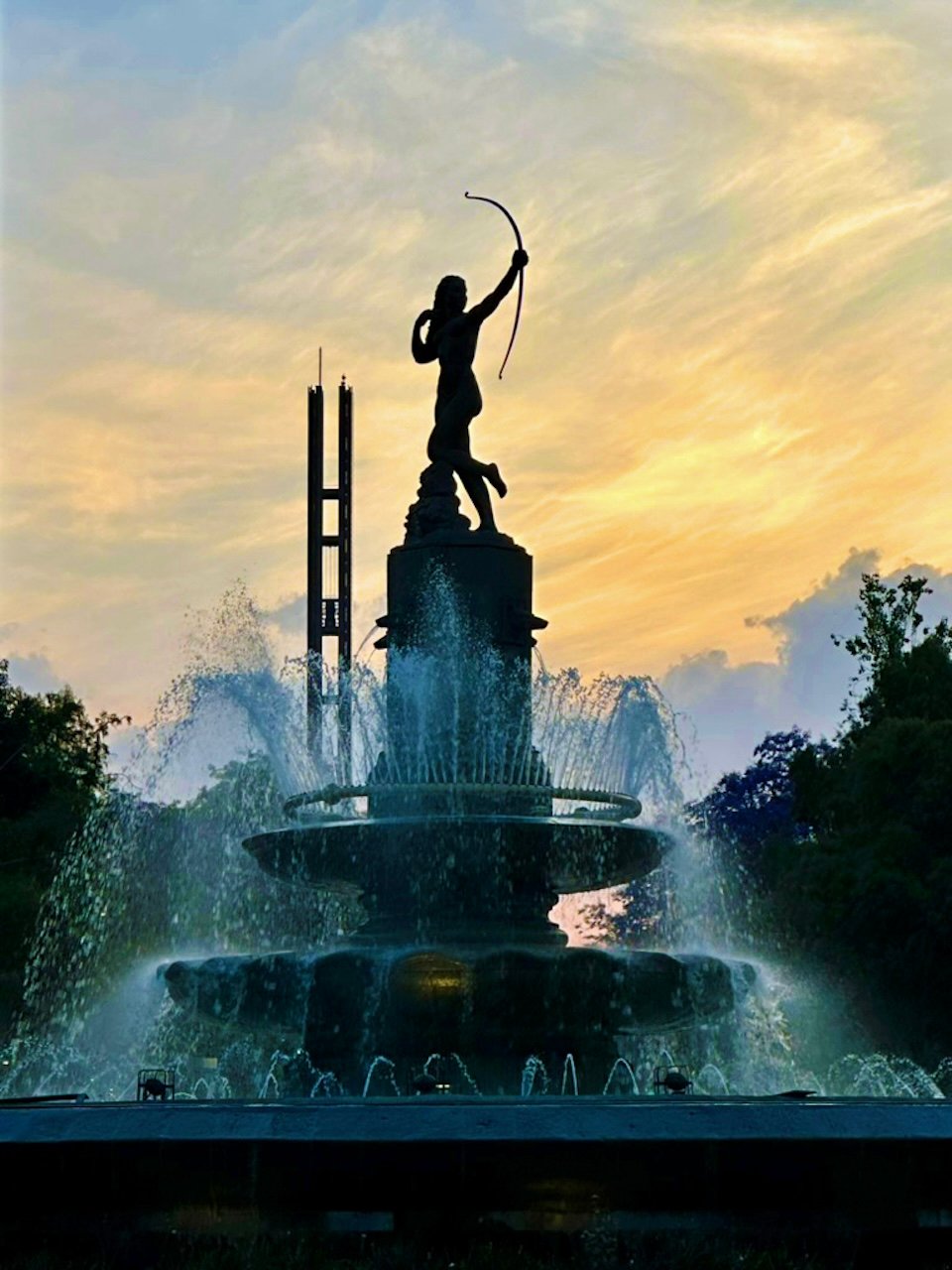
Mexico City Travel Guide: Top Museums
Mexico City is home to more than 150 museums, offering cultural, historical, and artistic experiences. Most museums in Mexico City are closed on Mondays. It is essential to check the specific closing days for each museum you plan to visit, as this information can be found on their official websites. Many museums in Mexico City may also close on holidays.
For the art aficionado:
- Frida Kahlo Museum (Museo Frida Kahlo - La Casa Azul): The Frida Kahlo Museum, also known as the Casa Azul (or Blue House in English), is a cultural gem nestled in the heart of Mexico City's vibrant Coyoacán neighborhood. Formerly the childhood home of the iconic Mexican artist Frida Kahlo, Casa Azul is now a museum dedicated to preserving her legacy and showcasing her life and art. Visitors can explore the vibrant rooms of Kahlo's former residence, adorned with her colorful paintings, personal belongings, and memorabilia, offering a glimpse into her tumultuous yet deeply creative world. From her iconic self-portraits to her unique fashion sense and political activism, the museum provides a comprehensive overview of Kahlo's multifaceted identity and enduring impact on Mexican culture and the art world. Tickets for the Frida Kahlo Museum typically sell out weeks in advance. Secure your spot in advance by booking your admission on the Museo Frida Kahlo website. If you are unable to procure tickets on your own, tickets and guided tours of the Frida Kahlo Museum can also be booked using third-party websites like our affiliate partner, GetYourGuide. If you book an experience or tour through our GetYourGuide affiliate link, we may earn a small commission.
- Palacio de Bellas Artes: The Palacio de Bellas Artes in Mexico City stands as an architectural marvel, blending Art Nouveau and Art Deco styles to create a breathtaking cultural landmark. Completed in 1934, the palace is adorned with intricate marble facades, ornate sculptures, and stunning stained glass windows, making it a true masterpiece of design. Within its walls, the palace hosts performances of ballet, opera, theater, and music, attracting audiences from around the world. Additionally, the palace is home to the Museo del Palacio de Bellas Artes, which houses a remarkable collection of Mexican art, including murals by renowned Mexican artists such as Diego Rivera, Roberto Montenegro, David Alfaro Siqueiros, and José Clemente Orozco. These murals, located on the second floor, depict scenes from Mexico's history and culture. Note: Tickets for the second floor museum can only be purchased with cash.
- Secretary of Public Education (Secretaría de Educación Pública): The Secretariat of Public Education building in Mexico City is renowned for its stunning murals created by renowned Mexican artist Diego Rivera. Commissioned in the 1920s, Rivera's murals adorn the walls of the building's interior courtyard, depicting scenes from Mexico's history, culture, and education system. The murals showcase Rivera's distinctive style and his commitment to social and political themes, with vivid colors, bold compositions, and intricate symbolism.
- Popular Art Museum (Museo de Arte Popular): The Popular Art Museum in Mexico City is a cultural institution dedicated to showcasing the rich diversity of Mexican folk art and crafts. Located in the historic center, the museum is housed in a beautifully restored Art Deco building. Its extensive collection features a wide range of traditional and contemporary Mexican handicrafts, including textiles, ceramics, wood carvings, paper mache, and metalwork. Visitors can explore exhibits that highlight the craftsmanship and artistic expressions of various regions and indigenous communities across Mexico. The museum plays a crucial role in preserving and promoting Mexico's folk art heritage, providing a vibrant and immersive experience for those interested in the country's traditional artistic practices.
- Museo Soumaya: The Museo Soumaya, located in Mexico City's Polanco neighborhood, is a striking architectural landmark and cultural institution founded by Mexican billionaire Carlos Slim. The museum's unique building, designed by architect Fernando Romero, features a gleaming façade of aluminum hexagonal tiles, creating a futuristic and visually captivating exterior. Inside, the museum's vast collection spans over 6,000 years of art history, with highlights including European Old Masters, Mexican colonial art, and contemporary Mexican artists. The museum also houses an extensive collection of sculptures by Auguste Rodin, as well as works by renowned artists such as Salvador Dalí and Diego Rivera. With its diverse and impressive collection, coupled with its distinctive architecture, the Museo Soumaya is a must-visit destination for art enthusiasts and cultural explorers in Mexico City.
- Museo Tamayo: The Museo Tamayo, located in Mexico City's Chapultepec Park, is a contemporary art museum named after renowned Mexican artist Rufino Tamayo. The museum primarily focuses on Mexican and Latin American art from the 20th century onwards, with a particular emphasis on abstract and conceptual art movements. In addition to its permanent collection, Museo Tamayo hosts temporary exhibitions featuring works by both emerging and established artists from around the world.
- Museum of Modern Art (Museo de Arte Moderno): The Museum of Modern Art in Mexico City is dedicated to showcasing modern and contemporary Mexican art. Located in Chapultepec Park, the museum's collection features works by prominent Mexican artists such as Frida Kahlo, Diego Rivera, David Alfaro Siqueiros, and Rufino Tamayo, among others. One of Frida Kahlo's most famous works is in the museum's collection. "The Two Fridas" ("Las Dos Fridas") is an iconic representation of Kahlo's unique style and personal symbolism. The Museum of Modern Art provides visitors with an opportunity to explore the evolution of Mexican art from the early 20th century to the present day, offering insight into the cultural and artistic movements that have shaped Mexico's rich artistic heritage.
- National Museum of Art (Museo Nacional de Arte or MUNAL): The National Museum of Art in Mexico City, housed in a magnificent neoclassical building in the historic center, boasts an extensive collection showcasing over six centuries of Mexican art. MUNAL's permanent exhibits also include sculptures, decorative arts, and works by influential Mexican artists.
- MUAC Contemporary Art Museum (Museo Universitario Arte Contemporáneo): The MUAC (Museo Universitario de Arte Contemporáneo) is a prominent contemporary art museum located in Mexico City, focusing on the art of the 21st century. Situated on the campus of the National Autonomous University of Mexico (UNAM), it is one of the largest and most important institutions dedicated to contemporary art in Latin America. The museum's collection features works by renowned Mexican and international artists, showcasing a diverse range of mediums and styles.
- Museo Jumex: The Museo Jumex is a contemporary art museum located in Mexico City's Polanco neighborhood. Founded by the Jumex Foundation, it showcases a significant collection of contemporary art from the 20th and 21st centuries, featuring works by both established and emerging artists from Mexico and around the world, including art by Andy Warhol, Damien Hirst, and Jeff Koons. The museum's striking architectural design, featuring a geometrically inspired building, has become a landmark in the city's cultural landscape.
For the history lover:
- National Museum of Anthropology (Museo Nacional de Antropologia): ♡ The National Museum of Anthropology in Mexico City is a renowned institution showcasing Mexico's diverse cultural heritage. Housed in a striking modernist building, the museum's thematic halls and galleries are home to an extensive collections of pre-Columbian artifacts, including iconic pieces like the Aztec Sun Stone and the Olmec Colossal Head. Visitors can explore ancient civilizations such as the Aztecs, Mayans, and Olmecs through finely crafted artifacts and replicas of important archaeological sites. The National Museum of Anthropology offers a captivating journey through Mexico's rich history and culture.
- Templo Mayor Museum (Museo del Templo Mayor): ♡ The Templo Mayor Museum, situated in the heart of Mexico City's historic center, offers a fascinating glimpse into the rich history of the Aztec Empire. Built upon the site of the ancient Aztec capital of Tenochtitlan, the museum showcases the archaeological remains of the Great Temple (Templo Mayor), once the focal point of Aztec religious life. Visitors can explore the excavated ruins of the temple complex, which includes ceremonial platforms, altars, and sculptures dedicated to Aztec gods such as Huitzilopochtli and Tlaloc. The museum's exhibits provide context to the archaeological findings, offering insights into Aztec religious beliefs, rituals, and urban planning. Through artifacts, models, and multimedia presentations, visitors can learn about the significance of the Templo Mayor as the spiritual and political center of the Aztec world, as well as its eventual destruction and the subsequent rise of colonial Mexico City atop its ruins. The Templo Mayor Museum serves as a captivating window into the ancient Aztec civilization and its enduring legacy in modern-day Mexico City.
- Chapultepec Castle (Castillo de Chapultepec): ♡ The Castillo de Chapultepec, situated amidst the lush greenery of Chapultepec Park in Mexico City, is a symbol of Mexico's rich history and cultural heritage. Constructed on sacred Aztec grounds, the castle served as a royal residence for Spanish viceroys and, in the 19th century, became the official residence of Emperor Maximilian I and Empress Charlotte during the brief French intervention in Mexico. It subsequently served as the presidential palace for several Mexican presidents. Today, the castle houses the National Museum of History (Museo Nacional de Historia), featuring exhibits that chronicle Mexico's storied past, from its ancient civilizations to the present day. Visitors can explore the opulent interiors of the castle, adorned with period furnishings, artwork, and artifacts, while enjoying panoramic views of Mexico City from its hilltop perch.
- Teotihuacan: ♡ Teotihuacan, situated approximately 30 miles northeast of Mexico City, is one of the most impressive archaeological sites in Mexico and a UNESCO World Heritage Site. This ancient Mesoamerican city flourished between the 1st and 7th centuries AD and was one of the largest cities in the pre-Columbian Americas, with an estimated population of over 100,000 inhabitants at its peak. The site is dominated by two monumental pyramids: the Pyramid of the Sun and the Pyramid of the Moon. Teotihuacan is also renowned for its well-preserved murals and the Avenue of the Dead, a central thoroughfare lined with impressive structures and platforms. Visitors to Teotihuacan can explore the archaeological site and immerse themselves in the fascinating history and culture of this ancient civilization.
Since Teotihuacan is located just outside of Mexico City, we recommend booking a tour to take you to see the impressive site. We booked a half-day tour via GetYourGuide which included transportation from our hotel. If you book an experience or tour through our GetYourGuide affiliate link, we may earn a small commission.
For families:
- Papalote Children's Museum (Papalote Museo del Niño): The Papalote Children's Museum in Mexico City is a dynamic and interactive museum designed to inspire creativity and learning in children. Located in the city's Chapultepec Park, Papalote offers a wide range of exhibits and activities focused on science, technology, art, and culture. Children can explore hands-on exhibits, participate in workshops, and engage in educational programs that encourage curiosity, imagination, and critical thinking. The museum's playful approach to learning makes it a popular destination for families and school groups, providing a fun and enriching experience for children of all ages.
- Natural History Museum (Museo de Historia Natural): The Natural History Museum in Mexico City is a fascinating institution dedicated to showcasing the country's rich biodiversity and natural heritage. Located in Chapultepec Park, the museum features extensive collections of fossils, minerals, plants, and animals, offering visitors a comprehensive overview of Mexico's diverse ecosystems and geological history. Exhibits cover a wide range of topics, including evolution, paleontology, ecology, and conservation, providing educational insights into the complexities of the natural world. The museum's interactive displays, dioramas, and multimedia presentations make learning about science and nature engaging and accessible for visitors of all ages. With its commitment to research, education, and conservation, the Natural History Museum plays a crucial role in promoting environmental awareness and stewardship in Mexico City and beyond.
- Chapultepec Zoo: Chapultepec Zoo, located in Mexico City's Chapultepec Park, is a renowned zoo established in 1923. It features diverse ecosystems like the African Savannah and Australian Outback, housing a wide array of animals such as elephants, giraffes, lions, and monkeys. Chapultepec Zoo is also home to an adorable giant panda named Xin Xin. The zoo is actively involved in conservation and education, participating in breeding programs and promoting wildlife awareness. Visitors can enjoy guided tours, interactive exhibits, and feeding sessions, making it a popular destination for families and nature enthusiasts.
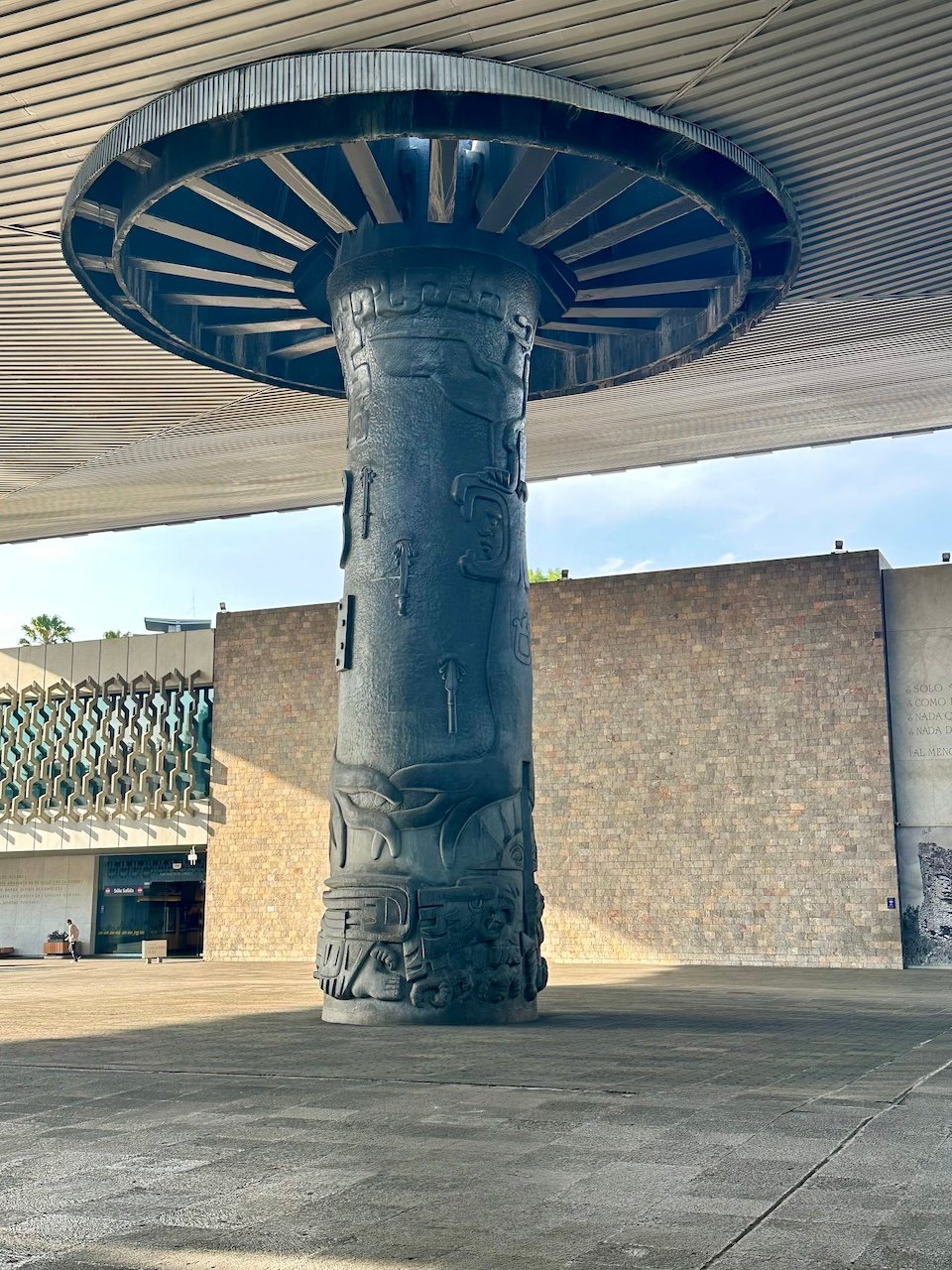
Mexico City Travel Guide: Popular Churches
While Mexico City is dotted with churches, we've curated a list of some of the most popular ones for visitors to explore.
Basilica of Our Lady of Guadalupe (Insigne y Nacional Basílica de Santa María de Guadalupe) ♡
The Basilica of Our Lady of Guadalupe in Mexico City is one of the most significant religious sites in the Americas, attracting millions of pilgrims and visitors each year. Built on the site where the Virgin Mary is said to have appeared to the indigenous convert Juan Diego in December 1531, the basilica also holds the revered image of the Virgin of Guadalupe, Mexico's patron saint. The complex consists of two basilicas: the Old Basilica, built in the 17th century and adorned with Baroque architecture, and the modern New Basilica, constructed in the 20th century to accommodate the growing number of pilgrims. The interior is adorned with religious art, including paintings, sculptures, and altarpieces, while the surrounding grounds feature chapels, gardens, and fountains for prayer and reflection. The Basilica of Our Lady of Guadalupe holds profound spiritual significance for Catholics and serves as a symbol of faith, unity, and devotion in Mexico and beyond.
Mexico City Metropolitan Cathedral (Catedral Metropolitana de la Asunción de la Bienaventurada Virgen María a los cielos)
The Mexico City Metropolitan Cathedral, situated on the Zócalo square in the heart of the historic center, is a majestic architectural marvel that stands as a testament to Mexico's colonial history and religious heritage. Built over three centuries, from the 16th to the 18th century, the cathedral features a blend of architectural styles, including Gothic, Baroque, and Neoclassical elements. Its imposing facade, adorned with intricate carvings and sculptures, leads to a grand interior with chapels, altars, and religious art. The cathedral's main artistic treasure is the ornate and gilded Altar of the Kings (Altar de los Reyes), located behind the main altar. The Metropolitan Cathedral is not only a place of worship but also a symbol of cultural continuity, with its centuries-old traditions and religious significance playing a central role in the life of Mexico City and its people.
Templo de San Hipólito
The Templo de San Hipólito in Mexico City is a historic church located near the Alameda Central park. Constructed in the 18th century, the church is dedicated to Saint Hippolytus, an ancient Roman martyr. One of the most notable features of the temple is its stunning Baroque facade, adorned with intricate sculptures and ornate details. The interior of the church is equally impressive, with beautiful altars, paintings, and religious artifacts.
Iglesia de San Jacinto
The Iglesia de San Jacinto in Mexico City is a historic church located in the picturesque neighborhood of San Ángel. Built in the 16th century, the church features a striking Baroque facade with intricate stone carvings and a prominent bell tower. The interior of the church is adorned with exquisite colonial-era artwork, including ornate altarpieces, religious paintings, and sculptures.
Parroquia San Juan Bautista
The Parroquia San Juan Bautista, located in the heart of the historic district of Coyoacán in Mexico City, is a charming colonial-era church steeped in history and tradition. Dating back to the 16th century, the church is dedicated to Saint John the Baptist and is one of the oldest houses of worship in Mexico City. The interior of the church is adorned with ornate altars, religious paintings, and sculptures, reflecting the rich artistic heritage of colonial Mexico. Parroquia San Juan Bautista is not only a place of worship but also a cultural landmark, serving as a focal point for religious celebrations and community gatherings in the vibrant neighborhood of Coyoacán.
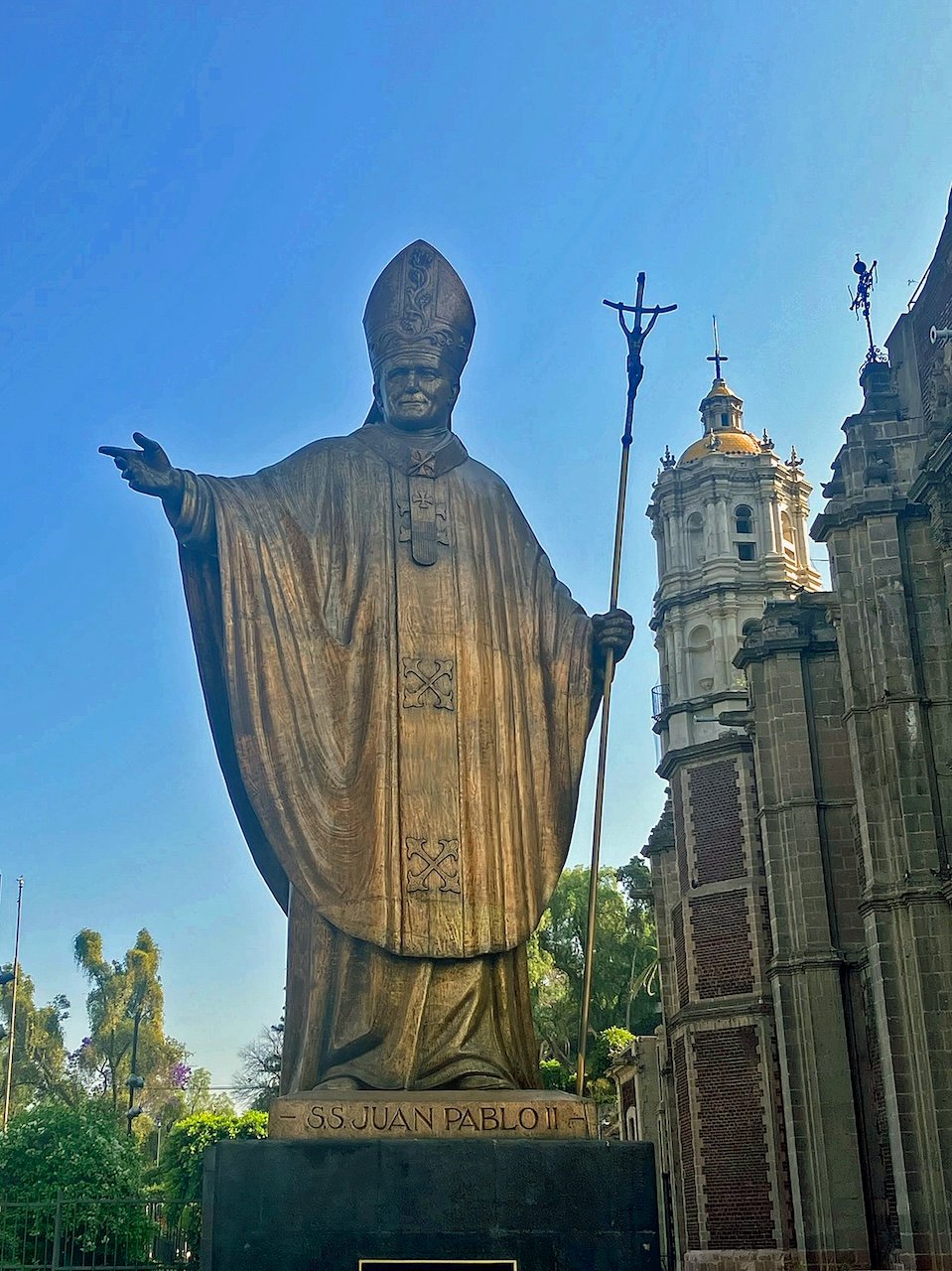
Mexico City Travel Guide: Gardens & Parks
Chapultepec Park (Bosque de Chapultepec)
Chapultepec Park is one of the largest and most iconic urban parks in Mexico City, spanning over 1,600 acres. Located in the heart of the city, the park offers a tranquil oasis amidst the bustling city, with lush green spaces and winding paths for leisurely strolls and outdoor activities. Within its boundaries, visitors can explore a variety of attractions, including museums, gardens, and cultural institutions such as the Chapultepec Castle, the National Museum of Anthropology, and the Chapultepec Zoo. The park is also a popular destination for recreational activities, with designated areas for picnics, jogging, cycling, and boating.
Botanical Garden at the Autonomous University of Mexico (UNAM)
The Botanical Garden at the Autonomous University of Mexico (UNAM) is a renowned botanical institution located on the University's campus in Mexico City. Established in 1959, the garden spans over 17 hectares and serves as a vital center for research, conservation, and education on Mexico's diverse plant life. The garden features an extensive collection of native and exotic plant species, including cacti, succulents, orchids, and tropical plants, arranged in thematic gardens and greenhouses. Visitors to the Botanical Garden can explore its winding paths, admire its diverse flora, and learn about the importance of plant conservation and biodiversity. Admission to the gardens is free.
Floating Gardens of Xochimilco
The Floating Gardens of Xochimilco, located in the southern part of Mexico City, are a UNESCO World Heritage Site and a cultural treasure that harkens back to the ancient Aztec civilization. These gardens consist of a series of interconnected canals and artificial islands called "chinampas," which were created by the Aztecs as a form of sustainable agriculture. Today, visitors can experience the unique charm of Xochimilco by taking a colorful trajinera (traditional gondola-style boat) ride along the canals, admiring the vibrant scenery and floating gardens teeming with flowers and vegetation. Along the way, they can also enjoy traditional Mexican cuisine and music, as mariachi bands and other musicians often serenade visitors from passing boats. The Floating Gardens of Xochimilco offer a glimpse into Mexico's rich cultural and agricultural heritage, making them a popular destination for both locals and tourists seeking a memorable and authentic experience.
Since the Floating Gardens of Xochimilco are outside of the city center, they are rather challenging to get to outside of an organized tour. We recommend booking a tour, that includes transportation from your hotel, via our affiliate partner, GetYourGuide, to experience the magnificent Floating Gardens of Xochimilco. Otherwise, your best bet is to take an Uber from the city center to Xochimilco. If you do not pre-book a tour of the Floating Gardens of Xochimilco, you can negotiate with boat owners upon arrival and expect to pay about $500-600 pesos ($30-36 USD) per hour for the entire boat (not per person).
If you book an experience or tour through our GetYourGuide affiliate link, we may earn a small commission.
Parque México
Parque México, located in the trendy Condesa neighborhood of Mexico City, is a vibrant urban oasis beloved by locals and visitors alike. Originally designed in the early 20th century, the park features lush green spaces, tree-lined paths, and serene lakes, providing a peaceful escape from the bustling city streets. Parque México is a popular destination for outdoor recreation and relaxation, with designated areas for picnics, jogging, dog-walking, and yoga. The park also hosts cultural events, concerts, and festivals throughout the year, adding to its lively and dynamic atmosphere. Surrounding the park are charming cafes, restaurants, and boutiques, making it a favorite spot for locals to gather, socialize, and enjoy the vibrant energy of Condesa.
Parque España
Parque España, nestled in Mexico City's Condesa neighborhood, is a historic public park. Its lush green spaces, walking paths, playgrounds, and central fountain provide a serene environment for relaxation and recreation. The park's rich history and architectural charm, blending Mexican and European styles, make it a popular spot for locals and tourists alike. Parque España also hosts cultural events such as concerts and art exhibitions, adding to its lively atmosphere. Surrounded by cafes, restaurants, and shops, the park serves as a hub of activity in Condesa, inviting visitors to enjoy the beauty and cultural richness of this dynamic urban oasis.
Alameda Central
Alameda Central is a historic and iconic park located in the heart of Mexico City, adjacent to the Palacio de Bellas Artes and the Historic Center. Established in the 16th century, it is one of the oldest public parks in the Americas. The park features beautifully landscaped gardens, fountains, sculptures, and tree-lined walkways, providing a serene and picturesque retreat from the urban hustle and bustle. One of its notable landmarks is the Hemiciclo a Juárez (Benito Juárez Hemicycle), a neoclassical monument dedicated to Mexican President Benito Juárez. Alameda Central has served as a focal point for cultural and social events throughout its history and continues to be a popular gathering place for locals and tourists. The park has undergone several renovations, maintaining its historical significance while adapting to the changing needs of the city. Visitors can enjoy leisurely strolls and occasional cultural events within this green oasis in the heart of Mexico City.
Parque Nacional Desierto de los Leones
Parque Nacional Desierto de los Leones is a sprawling protected area located in the western part of Mexico City. Covering over 1,800 hectares of pine and oak forests, the park offers visitors a serene natural retreat away from the city's hustle and bustle. The park is named after a former Carmelite monastery, El Desierto de Nuestra Señora del Carmen de los Montes de Santa Fe, that previously stood on this site. Visitors to Desierto de los Leones can enjoy hiking trails that wind through the forest, camping, mountain biking, and other activities. The park is located at one of the highest altitudes in Mexico City, at an average of 11,482 ft. (3,500 meters) above sea level.
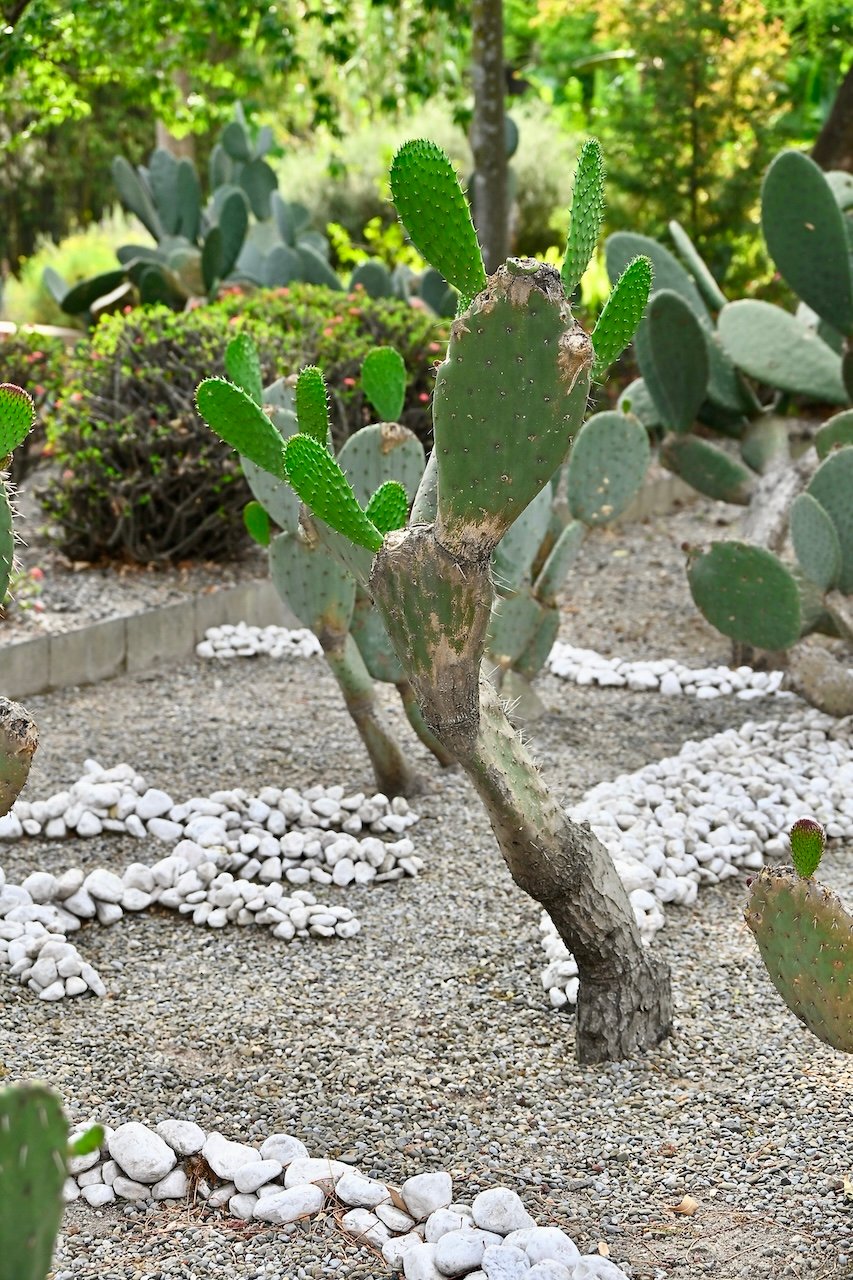
Mexico City Travel Guide: A Taste of Mexico City
Mexico City boasts a diverse and vibrant food scene, offering a culinary adventure for every taste palate. From tacos and tamales to innovative street food and Michelin-starred dining, the city caters to a wide range of gastronomic preferences. Discover Mexico City's vibrant culinary scene by exploring local taquerías, treating yourself to seasonal Mexican cuisine at upscale restaurants, and indulging in savory street snacks at bustling markets. With an abundance of dining choices, from hidden gems in colonial alleyways to world-class establishments in iconic neighborhoods, Mexico City serves as a dynamic culinary capital, enticing food lovers with its ever-evolving gastronomic offerings.
Street Food:
Street food in Mexico City is a vibrant and essential part of the culinary scene, offering a wide array of delicious and affordable options to satisfy any craving. From tacos and tamales to quesadillas and elotes, the city's streets are lined with food stalls and carts serving up traditional Mexican dishes bursting with flavor. Some popular street foods include tacos al pastor, made with marinated pork cooked on a vertical spit; tlacoyos, thick tortillas filled with beans or cheese and topped with salsa and cheese; and elotes, grilled corn on the cob slathered with mayonnaise, cheese, chili powder, and lime juice. Whether you're exploring the historic center, wandering through bustling markets, or strolling through neighborhood streets, you're sure to encounter an array of tempting street food options that showcase the diverse flavors and culinary traditions of Mexico City.
If you are looking to try street food but are worried about the language barrier or are intimidated by all of the options, then a street food walking tour could be for you! We recommend booking a street food walking tour, like this one with GetYourGuide.
If you book an experience or tour through our GetYourGuide affiliate link, we may earn a small commission.
Speciality Foods:
Mexico City is a haven for culinary enthusiasts, offering a plethora of Mexican delicacies to try. Amidst the city's diverse gastronomic scene, be sure to indulge in these specialties that showcase the unique and delectable flavors Mexico City has to offer.
- Tacos al Pastor: Marinated pork cooked on a vertical spit, served in a corn tortilla with pineapple, onion, and cilantro.
- Tamales: Steamed corn dough filled with various ingredients such as chicken, pork, or vegetables, wrapped in a corn husk.
- Chilaquiles: Fried corn tortilla chips topped with salsa, cheese, sour cream, and sometimes eggs or shredded chicken.
- Mole: A rich, savory sauce made from a blend of chili peppers, spices, chocolate, and other ingredients, traditionally served over turkey, chicken or other meats.
- Pozole: A hearty soup made with hominy corn, pork or chicken, and seasoned with chili peppers, herbs, and spices, often served with garnishes like radishes, lettuce, and lime.
- Enchiladas: Corn tortillas filled with meat, cheese, or beans, rolled up and topped with chili sauce, cheese, and sour cream.
- Tostadas: Crispy fried corn tortillas topped with beans, meat, seafood, or vegetables, and garnished with salsa, lettuce, and cheese.
- Tortas: Mexican sandwiches filled with a variety of ingredients such as pork, chicken, avocado, beans, and cheese, served on a soft roll.
- Chiles en Nogada: Roasted poblano peppers stuffed with a mixture of ground meat, fruits, and spices, topped with a creamy walnut sauce and pomegranate seeds, widely considered a national dish of Mexico.
- Conchas: A popular Mexican sweet bread characterized by their seashell-like appearance (hence the name concha, meaning shell), soft dough flavored with vanilla or cinnamon, and crunchy, sugary topping, enjoyed as a delightful snack or breakfast treat in Mexico City.
Popular Restaurants:
Mexico City is full of fantastic eateries and delicious culinary experiences can be found at every price point. While this is by no means a comprehensive list of restaurants we ate at in Mexico City, a few spots we thoroughly enjoyed and/or were recommended to us by locals are listed below.- Balta (Reforma) - Balta, located inside the Sofitel Mexico City Reforma Hotel, is a contemporary Mexican restaurant known for its creative dishes using locally sourced ingredients, offering an upscale dining experience in a stylish ambiance.
- Tomasa Condesa (Condesa) - The best artisanal conchas in Mexico City, this bakery was featured on CNN's Eva Longoria: Searching for Mexico.
- Taquería Turix (Polanco) - Taquería Turix is renowned for its delicious tacos with unique fillings like cochinita pibil, making it a popular spot for casual yet flavorful Mexican cuisine.
- El Fogón Mixe (Polanco) - El Fogón Mixe is a beloved taqueria featuring tacos al pastor, offering an authentic taste of regional Mexican flavors in a cozy and casual setting.
- Peltre Lonchería (Roma) - Peltre Lonchería is a charming eatery known for its comforting Mexican dishes, perfect for breakfast and lunch. Specialties include chilaquiles, tortas, huevos rancheros, and other hearty breakfast plates.
- Azul (Multiple Locations) - A highly recommended eatery for traditional Mexican dishes, including mole. We ate at the Azul Condesa location.
- Murakami (Polanco) - Murakami in Polanco is a renowned Japanese restaurant known for its exquisite sushi and sashimi, gyoza, and other traditional Japanese dishes.
- El Rey Suadero (Polanco) - El Rey Sudadero is a popular taqueria known for its flavorful and affordable tacos al pastor, suadero, and other traditional Mexican street food, offering a casual and lively atmosphere that attracts both locals and tourists looking for authentic flavors.
- La Docena (Roma & Polanco) - La Docena is a renowned seafood restaurant that offers a wide variety of fresh oysters, ceviches, seafood platters, and other delicious dishes in a stylish and contemporary setting.
- Maque Cafe (Condesa) - Maque Cafe is a trendy and modern, Parisian-inspired cafe known for its artisanal coffee, and delicious breakfast options like chilaquiles and pastries.
- Pizza Perro Negro (Multiple Locations) - A phenomenal pizzeria, with both traditional and Mexican-inspired pizzas, including carnitas pizza.
- RosaNegra (Polanco) - RosaNegra is a vibrant and upscale restaurant known for its lively atmosphere, creative cocktails, and contemporary Mexican cuisine with a global twist, offering dishes like seafood ceviche, grilled meats, and decadent desserts in a stylish setting.
- Panadería Rosetta (Roma) - Panadería Rosetta is a popular bakery known for its artisanal bread, pastries, and desserts crafted with high-quality ingredients and traditional techniques, offering an array of options including croissants, conchas, and eclairs.
- La Veranda at Casa Polanco Boutique Hotel (Polanco) - La Veranda at Casa Polanco Boutique Hotel is a charming restaurant that offers a delightful dining experience with a focus on Mexican and international cuisine. The restaurant features a cozy and elegant ambiance, making it ideal for romantic dinners or special occasions.
- Churrería El Moro (Multiple Locations) - El Moro is an iconic churros and chocolate shop in Mexico City, known for its traditional Spanish-style churros served with rich and creamy hot chocolate. Established in 1935, El Moro has become a beloved spot for locals and tourists alike, offering freshly made churros dusted with sugar and cinnamon.
-
Supra Roma Rooftop (Roma) - Supra Roma Rooftop offers an elevated dining experience in Mexico City, boasting breathtaking panoramic views, innovative cocktails, fusion cuisine, and a lively ambiance that sets the stage for a memorable dining experience.
Looking for additional restaurant recommendations for your trip to Mexico City? Check out the links below.
The Best Bars & Restaurants in Mexico City >
The 38 Essential Mexico City Restaurants >
Markets & Food Stalls:
While street food can be found all over Mexico City, some of the best places to try street food are at food stalls within local markets. Some of the most popular include:
- Mercado Roma (Roma) - Mercado Roma is a contemporary gourmet market that showcases the best of Mexican cuisine and culinary innovation. Located in the trendy Roma neighborhood, the market is housed in a stylish building and features a diverse array of food stalls, eateries, and specialty shops offering a wide range of gourmet products and artisanal goods. Visitors to Mercado Roma can sample a variety of traditional Mexican dishes as well as innovative fusion cuisine, including tacos, ceviche, gourmet sandwiches, and more. With its modern design, lively atmosphere, and diverse culinary offerings, Mercado Roma is a must-visit destination for food lovers looking to experience the vibrant flavors of Mexico City.
- Mercado Coyoacán (Coyoacán) - Mercado Coyoacán is a bustling traditional market located in the heart of the Coyoacán neighborhood in Mexico City. This historic market dates back to the early 20th century and is housed in a colorful building adorned with murals and mosaics. Inside, visitors will find a vibrant array of stalls selling fresh produce, meats, seafood, spices, and traditional Mexican ingredients. In addition to its food offerings, Mercado Coyoacán also features a variety of eateries serving up delicious local dishes such as tacos, tamales, and enchiladas. The market is one of the most popular markets for tourists in Mexico City due to its close proximity to the Frida Kahlo Museum.
- Mercado de la Merced (La Merced) - Mercado de la Merced is one of the largest and busiest traditional markets in Mexico City. Located in the historic center of the city, La Merced spans several city blocks and is a bustling hub of activity from dawn until dusk. The market offers a vast array of goods, including fresh produce, meats, seafood, spices, clothing, household items, and much more. Visitors to La Merced can immerse themselves in the sights, sounds, and smells of a traditional Mexican market as they navigate the maze of narrow aisles and bustling stalls. The market is known for its lively atmosphere, with vendors hawking their wares and shoppers bargaining for the best deals. La Merced is also a popular destination for food lovers, with numerous eateries and food stalls offering a variety of authentic Mexican dishes and street food specialties.
- Mercado de San Juan (Polanco) - Mercado San Juan, located in the historic center of Mexico City, is a gourmet market known for its high-quality and exotic food offerings. Mercado San Juan caters to food enthusiasts, chefs, and gourmands seeking unique and rare ingredients. The market features a diverse array of vendors selling a wide range of products, including specialty meats (iguana, alligator, wild boar, etc.), edible insects, ostrich eggs, aged cheeses, seafood, fruits, vegetables, and spices from around the world.
Cocktail Bars & Nightlife:
During our travels, we enjoy exploring cocktail bars and often rely on the The World's 50 Best Bars list to help us find some fantastic spots. Mexico City boasts several establishments from this list, highlighted below, along with additional spots we discovered based on the recommendations from locals.- Hanky Panky (La Juarez)
- Handshake Speakeasy (La Juarez)
- Licorería Limantour (Roma)
- Baltra Bar (Condesa)
-
Cityzen Rooftop Bar at Sofitel Mexico City Reforma (Reforma)
As always with traveling to Mexico, exercise extra caution when frequenting bars and nightclubs, or when consuming alcohol. Being in an intoxicated state can make you vulnerable to theft, kidnapping, or other dangers.
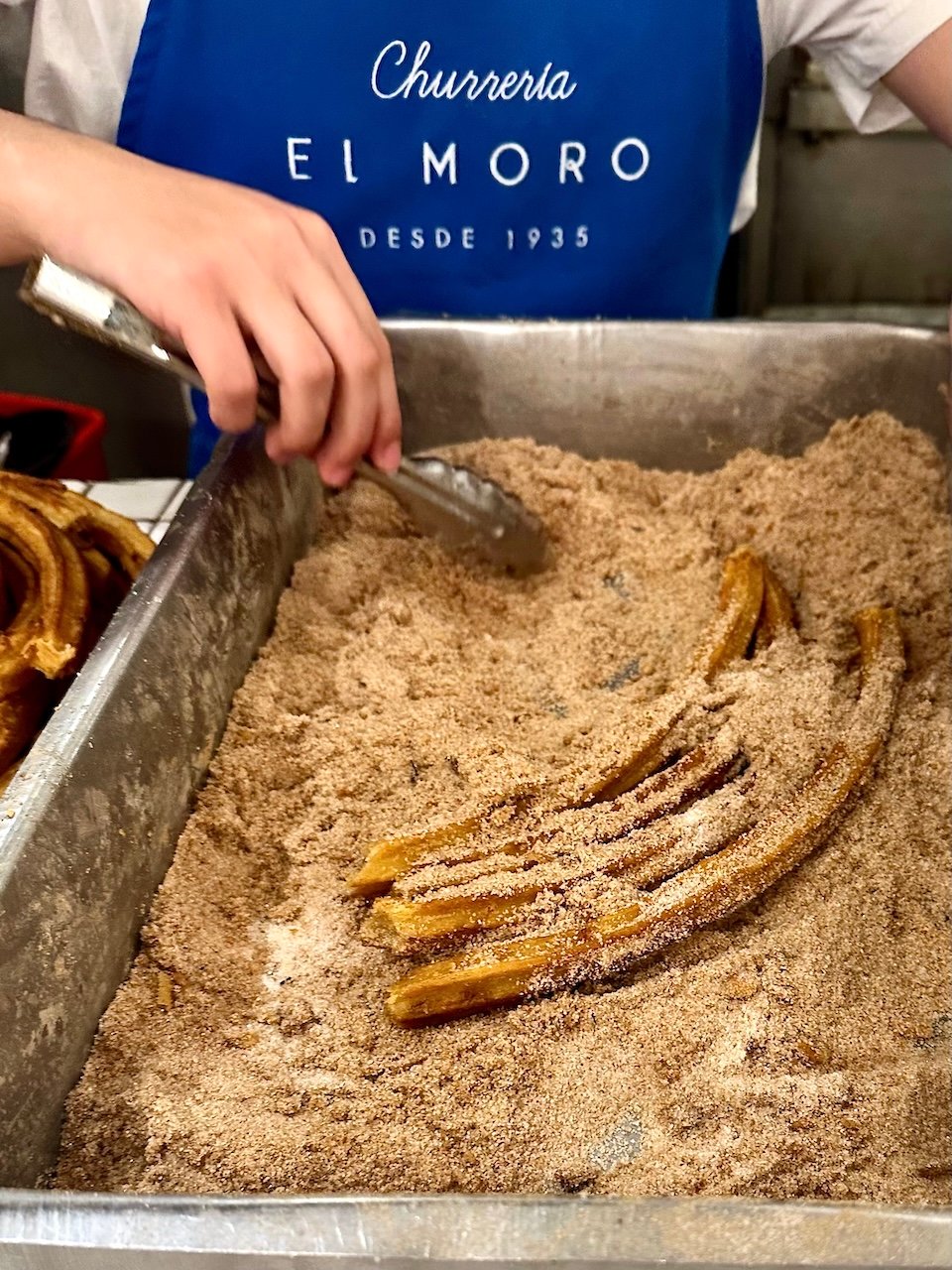
Mexico City Shopping Guide
Shopping in Mexico City is a vibrant and diverse experience, offering everything from traditional markets to high-end luxury shops selling international brands. Some popular shopping areas include:
-
Polanco: Known for its upscale shopping, Polanco boasts luxury boutiques, designer stores, and exclusive shopping centers such as Antara Fashion Hall.
-
Condesa and Roma: These trendy neighborhoods feature eclectic boutiques, vintage shops, and artisanal markets, offering unique finds and local crafts.
-
Centro Histórico: Explore historic streets home to traditional markets, artisan workshops, and stores selling everything from textiles to handicrafts.
-
Coyoacán: Wander through colorful markets like Mercado de Coyoacán where you can browse handmade crafts, jewelry, and souvenirs.
-
San Ángel: Visit the Bazaar Sábado in Plaza San Jacinto, a renowned art market featuring paintings, sculptures, ceramics, and textiles by local artists.
Markets:
Shopping in markets in Mexico City is a vibrant and culturally rich experience, offering a wide array of handmade crafts and traditional souvenirs. Some of the most popular markets for these items include:
Mercado de Artesanías La Ciudadela: Located near the historic center, La Ciudadela is one of the largest handicraft markets in Mexico City, featuring stalls selling pottery, textiles, leather goods, and other traditional crafts from all over Mexico.
Mercado de Coyoacán: Situated in the charming neighborhood of Coyoacán, this market is known for its colorful atmosphere and diverse range of goods, including textiles, ceramics, jewelry, and folk art.
Mercado de la Merced: As one of the largest and oldest markets in Mexico City, La Merced offers a vast selection of goods, including textiles, clothing, kitchenware, and traditional Mexican candies and snacks.
El Bazaar Sábado: El Bazaar Sábado is a vibrant arts and crafts market held every Saturday in the San Ángel neighborhood. It offers a wide array of handmade Mexican goods, including pottery, textiles, and jewelry, making it a favorite spot for locals and tourists seeking authentic souvenirs. The market is open to the public every Saturday from 9:00 AM to 6:00 PM.
Looking for more information on shopping in Mexico City? Check out this guide from Hotels.com.
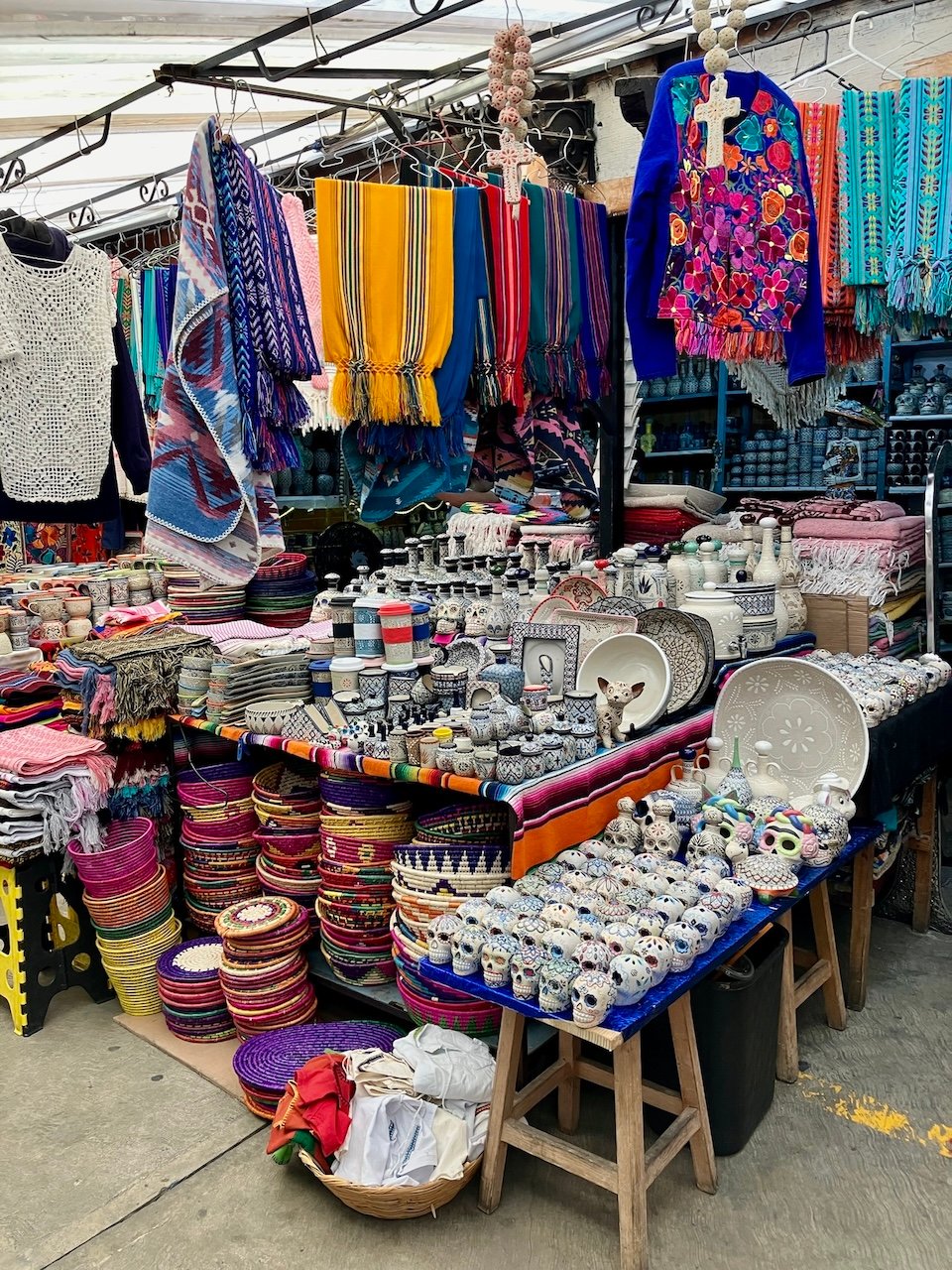
Mexico City Travel Guide: Transportation
Mexico City, the sprawling capital of Mexico, may initially overwhelm first-time visitors with its vast size. Nevertheless, the city offers a reliable and affordable mass transit system, providing an efficient means to navigate its diverse neighborhoods and attractions. Utilizing navigation apps like Google Maps can greatly enhance the ease and efficiency of travel throughout the city.
Worth mentioning is that Mexico City is a huge city with terrible traffic. Often times, it will be quicker (particularly during rush hour) to walk to your destination than it would to go via car or other mass transit option. As such, be sure to pack comfortable walking shoes for your trip to Mexico City.
Airport:
Mexico City welcomes travelers through a main airport, easily connected to the city center.- Mexico City International Airport, officially known as Benito Juárez International Airport (MEX), is the busiest airport in Mexico and serves as the primary gateway to the country's capital. Located just east of the city center, it offers domestic and international flights to destinations across the globe.
Transportation To/From Airport:
- Metrobús: The Metrobús picks up from MEX at Terminals 1 and 2 - follow the signs after you arrive. The cost is $30 pesos ($1.78 USD), making it one of the most budget-friendly transportation options. Before boarding a Metrobús, you will need a Metrobús card which can be obtained from a kiosk inside the main arrivals hall at MEX. Most travelers will want to take Metrobús Line 4 to Colonia Buenavista - a transit hub near the historic center. The ride can take anywhere between 45-60 minutes. The Metrobús is fine if you have small luggage, but if you are traveling with multiple bags, this may not be the best option.
- Metro: The Terminal Aérea metro station is located outside Terminal 1 at MEX. Metro tickets cost $5 pesos ($0.30 USD) per journey. The metro ride from the airport to the city center takes about 50 minutes. Keep in mind that luggage (backpacks are fine) is technically not allowed on the metro, so if you are traveling with large pieces of luggage, this might not be the best mode of transportation for you.
- Private Driver: Ask if you hotel can arrange pick-up for you. Typically this service comes at a higher cost than any of the other transportation options listed here, but it is the safest option - especially if you are traveling alone or with small children. Expect the cost of a private driver to be between $300-400 pesos ($18-24 USD), but it may be more based on your destination.
- Rideshare Apps: Ubers can be ordered to pick-up from MEX, but make sure you follow the correct signage for Uber pickups. The cost of an Uber should be similar to that of a taxi from the airport. Cabify and DiDi are also alternatives to Uber in Mexico City and commonly used by locals.
- Taxi: A taxi from MEX to Mexico City's historic center is a fixed price depending on your destination. Plan for it to cost around $360 pesos (or $21 USD). You pay in-advance at the taxi stand at the airport, so you do not need to worry about haggling with your driver over the fare. Taxi rides typically take around 30 minutes from the airport to the city center, but may take longer if you are traveling during rush hour. If you want to take a taxi from MEX follow the signs in the airport for the taxi counter and be sure to ignore taxi drivers that wander up to you in the arrivals terminal as they do not work for the companies (like Yellow Cab) that offer the fixed price taxi service.
Local Transit:
- Metro: Mexico City's metro system is one of the largest and busiest in the world, serving millions of passengers each day. While it's generally considered safe, travelers should remain vigilant, especially during crowded rush hours and avoid displaying valuables. The metro network is extensive, with 12 lines covering most areas of the city, making it relatively easy to navigate. Signage and announcements are primarily in Spanish, but maps are available in stations and online to assist non-Spanish speakers. Overall, the metro offers an efficient and affordable way to travel around Mexico City. Metro tickets cost $5 pesos ($0.30 USD) per journey.
- Buses: Public buses are a common mode of transportation in Mexico City, offering an extensive network that covers many areas not serviced by the metro. While they are generally safe, travelers should exercise caution, especially during rush hour and when carrying valuables. Bus routes can be complex and not always well-marked, which may make them challenging for non-locals to navigate. However, they are relatively inexpensive and provide access to neighborhoods and attractions not easily reached by other means of public transport. It's advisable to familiarize yourself with the routes and ask locals or bus drivers for assistance when needed. Additional information about buses, including fares, can be found on the Mexico City Government website.
- Rideshare Apps: Rideshare apps like Uber, DiDi, and Cabify are widely available and popular in Mexico City, offering a convenient and often safer alternative to traditional taxis. These apps are generally considered safe to use, as they provide information about the driver and vehicle before the ride begins. Additionally, payment is handled electronically through the app, reducing the risk of robbery or fraud. Rideshare apps are easy to use, with user-friendly interfaces available in multiple languages, making them accessible to visitors. Overall, rideshare apps provide a reliable and efficient way to get around Mexico City, especially for travelers concerned about safety or language barriers.
- Taxis: Taxis are a common mode of transportation in Mexico City, but safety concerns have been raised due to issues such as unauthorized drivers and a lack of regulation. Additionally, most taxi drivers in Mexico City do not speak English. For safety purposes, it is recommended to use official taxi services from authorized stands, such as those at airports, hotels, and major tourist areas.

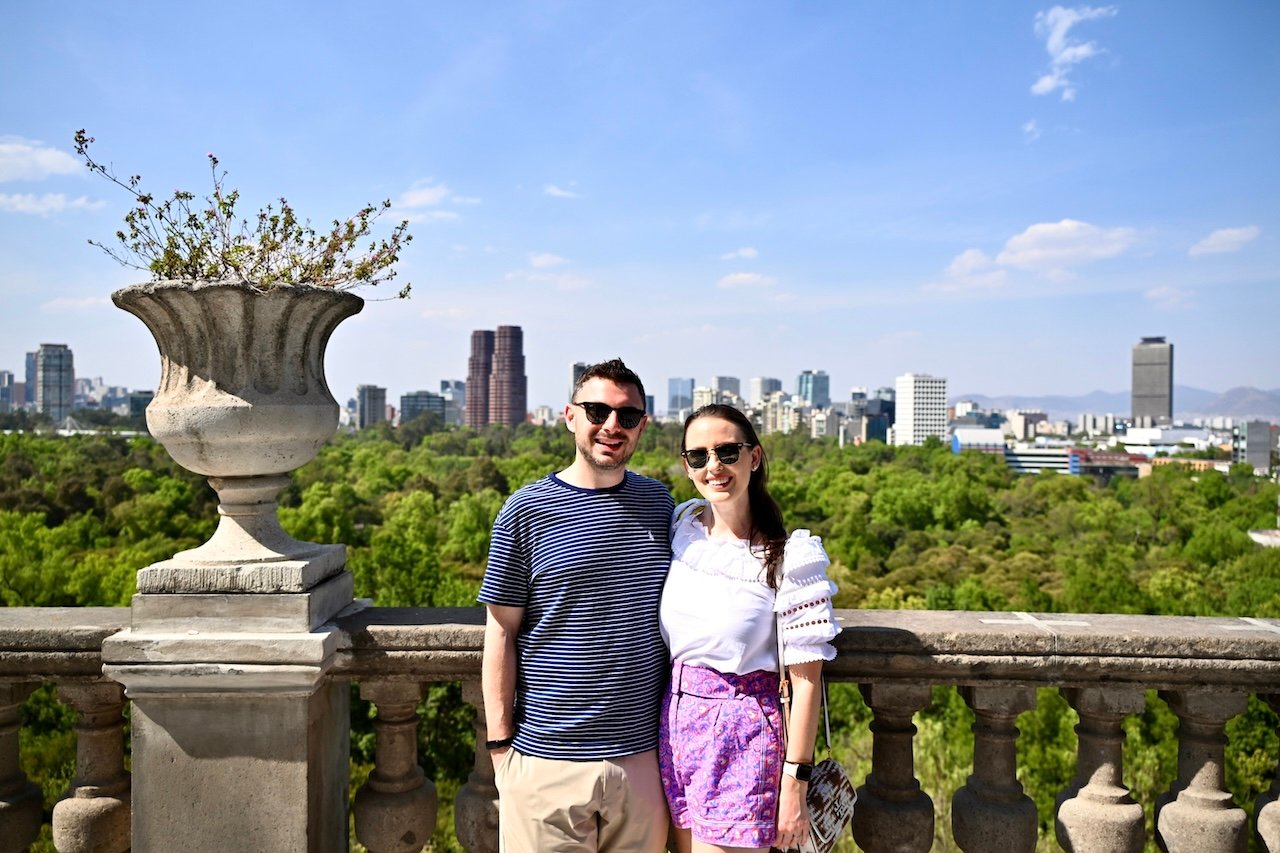
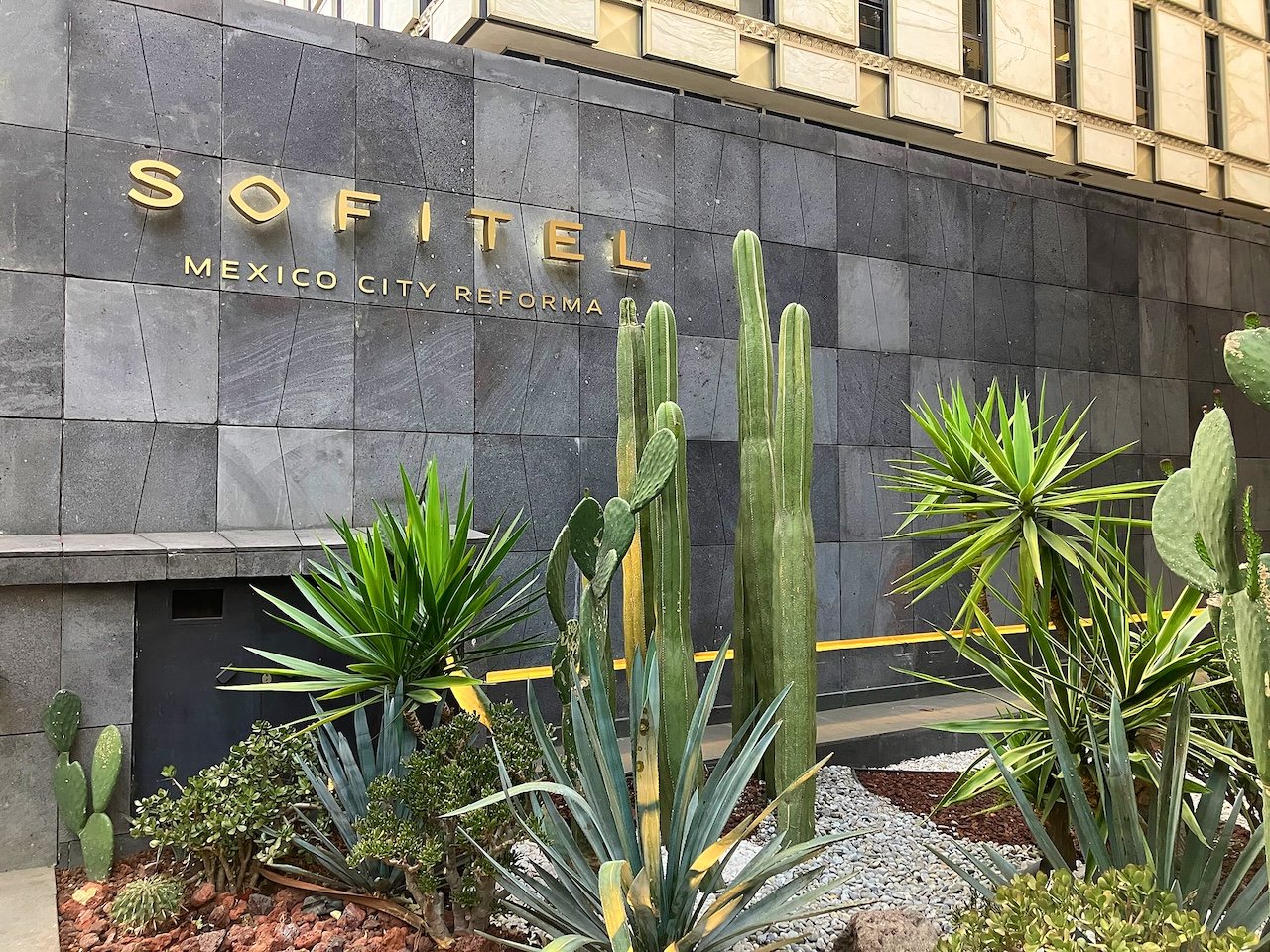
Why we loved Mexico City
We had an unforgettable five days stay at the Sofitel Mexico City Reforma, immersing ourselves in the vibrant culture and rich history of Mexico City. From indulging in the delectable local cuisine to exploring the world-class museums, every moment was filled with excitement and discovery. We embarked on half-day excursions to marvel at the ancient pyramids of Teotihuacan and navigate the enchanting canals of Xochimilco's floating gardens.
Our hotel, Sofitel Mexico City Reforma, was a haven of luxury and comfort, situated in a prime location that allowed us to explore the surrounding area with ease. Despite our jam-packed itinerary, we found that five days was not nearly enough time to fully uncover all of Mexico City's treasures, but it provided to be enough time for an excellent introduction to this captivating capital city. Highlights included immersing ourselves in history and culture at the National Museum of Anthropology, as well as marveling at the grandeur of Chapultepec Castle.
Of course, no visit to Mexico City would be complete without savoring the flavors of mole and tacos al pastor, as well as indulging in the city's swanky upscale cocktail bar scene. Overall, our experience was nothing short of spectacular, and we're already counting down the days until we can return and continue our exploration of this incredible metropolis.
Mexico City Neighborhoods
Centro Histórico
Centro Histórico, or the historic center, is the heart of Mexico City and one of the oldest and most vibrant neighborhoods in the city. It is home to numerous landmarks, cultural attractions, and historical sites, making it a must-visit destination for tourists and locals alike. Some of the key attractions in Centro Histórico include: Zócalo (Plaza de la Constitución), Metropolitan Cathedral, Palacio de Bellas Artes, Templo Mayor, Alameda Central, Torre Latinoamericana, Museo Nacional de Arte (National Museum of Art), and Mercado de San Juan.
Centro Histórico is a bustling and lively neighborhood with a rich cultural heritage, offering a mix of history, architectural beauty, and modern amenities. It is a great place to stay for visitors who want to be close to the city's main attractions, museums, restaurants, and nightlife. There are plenty of accommodation options in Centro Histórico, ranging from hotels and guesthouses to budget-friendly hostels, making it convenient for travelers of all budgets. However, it's important to note that Centro Histórico can be crowded and noisy, especially during peak tourist seasons, so travelers looking for a quieter stay may prefer other neighborhoods.
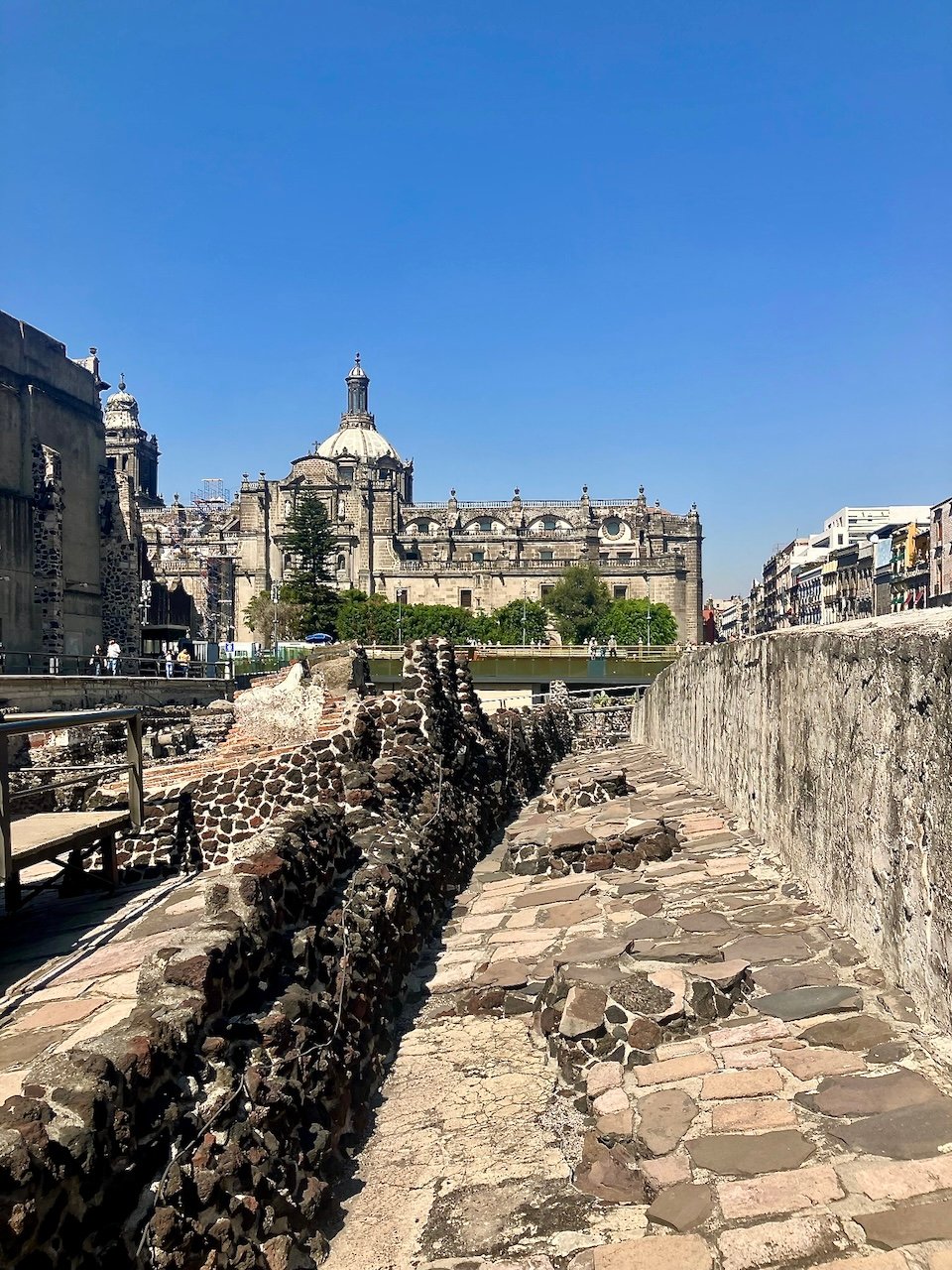
Condesa & Roma
Both Condesa and Roma are trendy and fashionable neighborhoods located in the central-western part of Mexico City, known for their leafy streets, Art Deco architecture, vibrant cultural scenes, and culinary delights. They have become popular destinations for locals and tourists alike, offering a mix of attractions, including:
-
Parque México and Parque España: These neighboring parks are the heart of both neighborhoods, offering green spaces, walking paths, playgrounds, and outdoor cafes where locals gather to relax and socialize.
-
Hip Cafes and Restaurants: Both neighborhoods are home to a variety of trendy cafes, restaurants, and bars serving everything from traditional Mexican cuisine to international fare, as well as artisanal coffee, craft cocktails, and gourmet desserts.
-
Cultural Attractions: Condesa and Roma are dotted with cultural institutions, including art galleries, theaters, and performance spaces, showcasing the work of local and international artists and performers.
-
Boutiques and Design Shops: Both neighborhoods are shopping paradises, with a mix of boutiques, design shops, and artisanal markets selling fashion, jewelry, home decor, and more.
There are plenty of accommodation options in both Condesa and Roma, including hotels, bed and breakfasts, and vacation rentals, making it convenient for travelers of all preferences and budgets. However, it's important to note that both neighborhoods can be lively and bustling, especially on weekends and during cultural events, so travelers looking for a quieter stay may prefer other neighborhoods.
While Condesa and Roma share many similarities, they also have their own distinct personalities.
Roma
Roma is a trendy and bohemian neighborhood. The neighborhood has undergone a revitalization in recent years, attracting artists, designers, and young professionals, and earning a reputation as one of the city's hippest districts. A couple of the key attractions in Roma include:
-
Mercado Roma: A gourmet market featuring a variety of food stalls, eateries, and specialty shops offering a diverse selection of gourmet products and artisanal goods.
-
Casa Lamm: A cultural center housed in a beautifully restored mansion, featuring art galleries, a bookstore, a cafe, and cultural events such as art exhibitions, film screenings, and literary readings.
Where to Go, What to Eat, and Where to Stay in Mexico City’s Roma Neighborhood >
Condesa
Condesa is a trendy and fashionable neighborhood located adjacent to Roma. Aside from the many eateries, bars, galleries, and shops, the main attraction in Condesa is Avenida Amsterdam. A picturesque tree-lined avenue that encircles Parque México, perfect for leisurely walks or bike rides, with charming cafes, boutiques, and galleries along the way.
An Epicurean Guide to Condesa >
How to Spend a Day in Condesa >
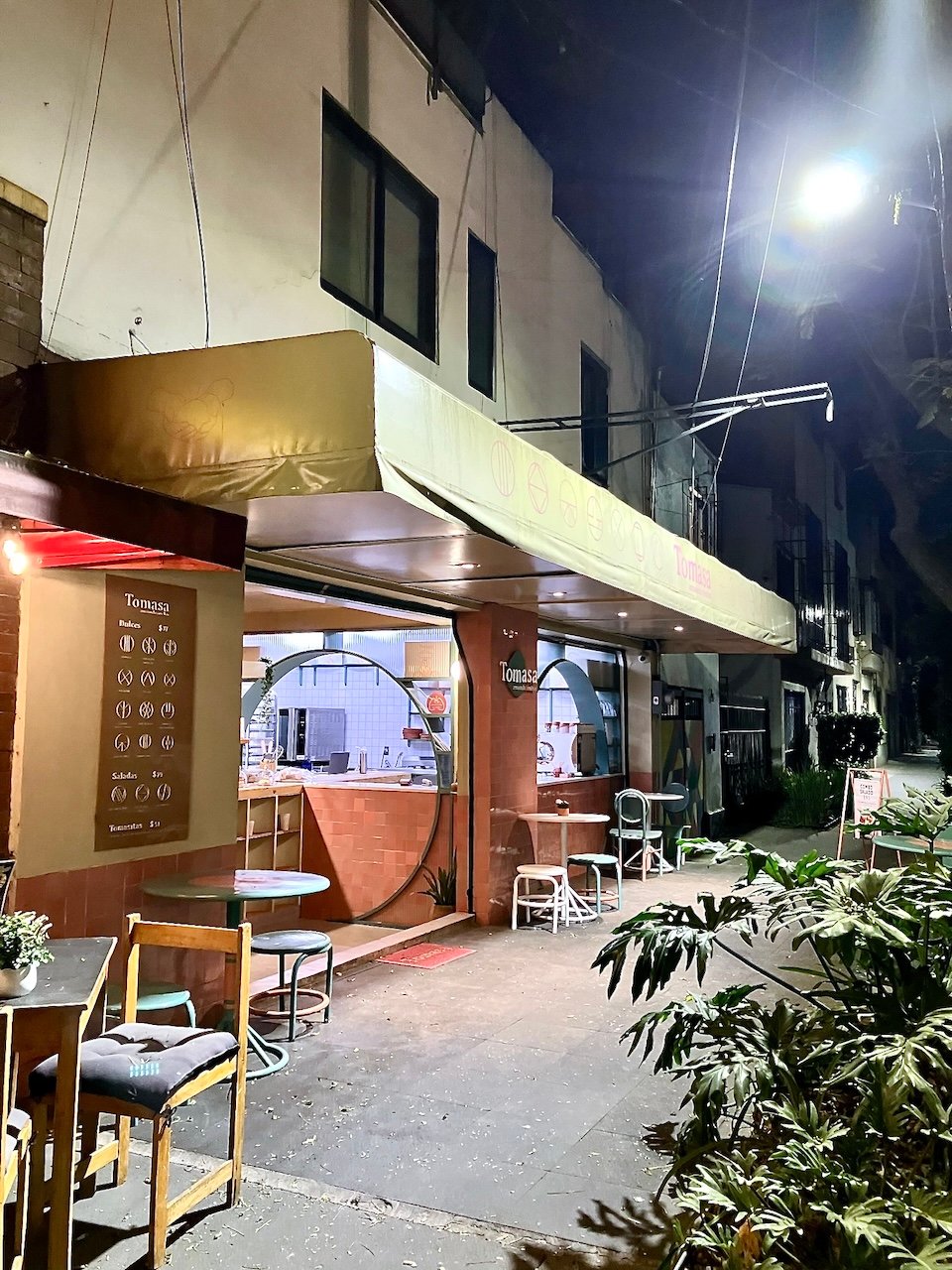
Polanco
Polanco is a prestigious and upscale neighborhood located in the central-western part of Mexico City, known for its luxurious shopping, dining, and cultural attractions. The neighborhood is characterized by its tree-lined boulevards, elegant residential buildings, and high-end boutiques and restaurants. Some of the key attractions in Polanco include:
-
Avenida Presidente Masaryk: Often referred to as the "Rodeo Drive of Mexico City," this exclusive shopping street is lined with luxury boutiques, designer stores, and upscale fashion brands.
-
Museums: Polanco is home to several world-class museums, including the Soumaya Museum, which houses an extensive collection of art and artifacts, and the Jumex Museum, which showcases contemporary art from Mexico and around the world.
-
Chapultepec Park: Polanco borders Chapultepec Park, one of the largest urban parks in the world, offering green spaces, walking trails, lakes, and cultural attractions such as the Chapultepec Castle, the National Museum of Anthropology, and the Chapultepec Zoo.
- Dining: Polanco is a culinary destination with a wide range of restaurants, cafes, and eateries serving everything from gourmet Mexican cuisine to international fare, as well as trendy bars and nightlife venues.
- Architecture: The neighborhood is known for its stunning architecture, with a mix of modern skyscrapers, historic mansions, and Art Deco buildings, creating a unique and picturesque urban landscape.
Polanco is considered one of the most desirable and affluent neighborhoods in Mexico City. It is a popular choice for both tourists and business travelers, with a variety of luxury hotels, boutique accommodations, and serviced apartments available. While staying in Polanco can be more expensive compared to other neighborhoods, the upscale amenities, proximity to attractions, and vibrant atmosphere make it a fantastic place to stay for visitors looking for a luxurious and convenient experience in Mexico City.
What to Do in Polanco >
Tripadvisor Best Restaurants in Polanco >
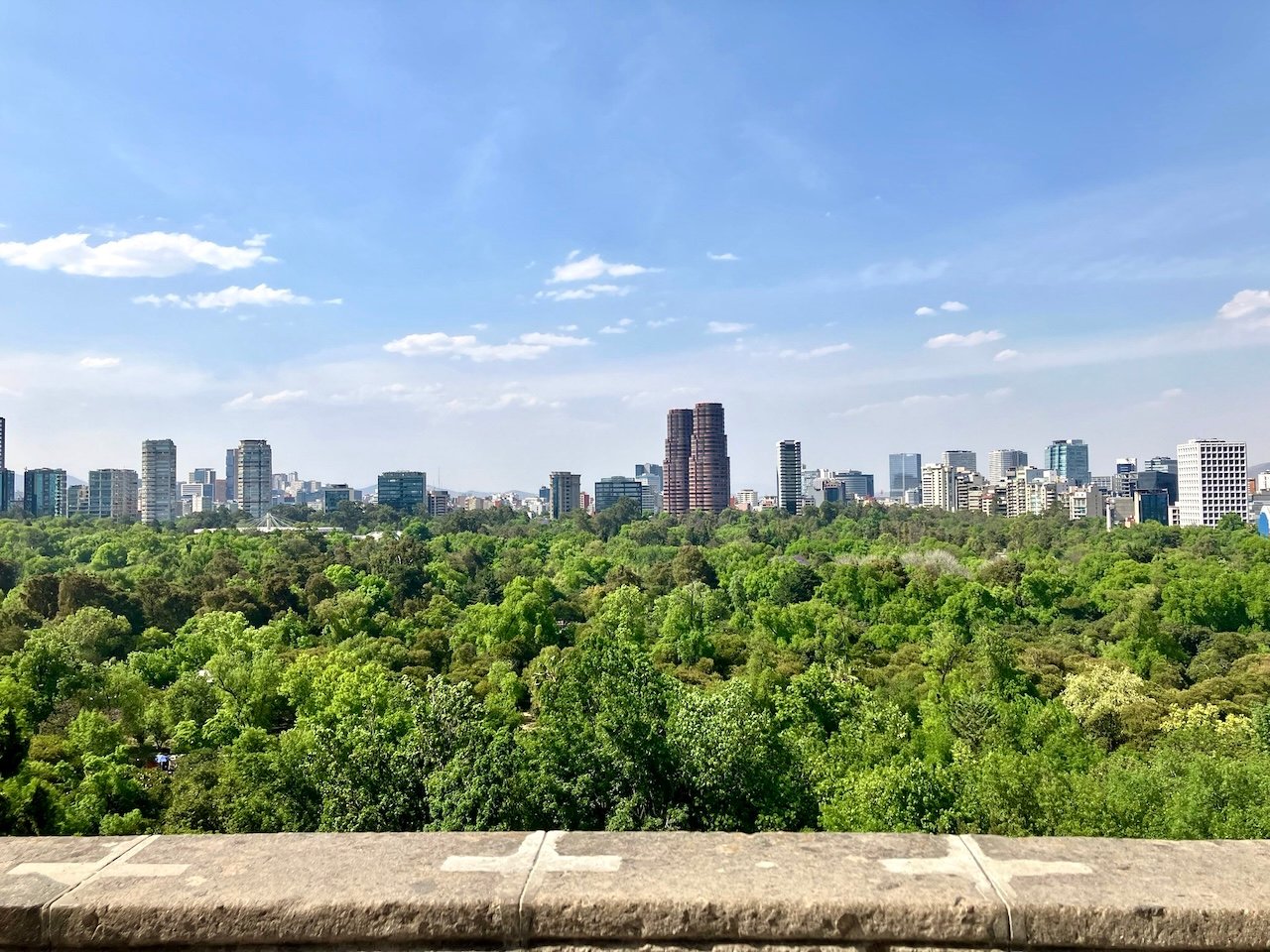
Juárez (Cuauhtémoc)
Juárez, located in the Cuauhtémoc borough of Mexico City, is a diverse and dynamic neighborhood known for its cultural attractions, historic landmarks, and vibrant dining and nightlife scene. Situated just west of the historic center, Juárez offers easy access to many of Mexico City's main attractions. Some of the key attractions in Juárez include:
-
The Angel of Independence (El Ángel de la Independencia): This iconic monument stands at the center of a bustling roundabout in Juárez, commemorating Mexico's independence from Spain.
- Paseo de la Reforma: Juárez is bordered by Paseo de la Reforma, one of Mexico City's main thoroughfares, known for its grand boulevards, historic landmarks, and impressive architecture. Visitors can stroll along Reforma and explore attractions such as the Diana the Huntress Fountain and the Monument to Cuauhtémoc.
- Museums: Juárez is home to several museums, including the Museum of Modern Art (Museo de Arte Moderno) and the Franz Mayer Museum (Museo Franz Mayer), showcasing a diverse range of art and cultural exhibitions.
- Dining and Nightlife: Juárez offers a wide variety of dining options, ranging from casual eateries and street food stalls to upscale restaurants and trendy bars. Visitors can sample traditional Mexican cuisine, international fare, and innovative culinary creations, as well as enjoy live music, DJs, and entertainment late into the night.
- Shopping: Juárez is a shopping hub, with a mix of boutiques, designer stores, and artisan markets offering everything from fashion and accessories to handicrafts and souvenirs.
Juárez is a popular place to stay for visitors looking to experience Mexico City's cultural attractions, historic landmarks, and vibrant atmosphere. The neighborhood offers a range of accommodation options, including upscale hotels, guesthouses, and vacation rentals, making it a convenient and comfortable base for exploring the city.
Top Things to Do in Juárez >
Guide to Local Favorites in Juárez >
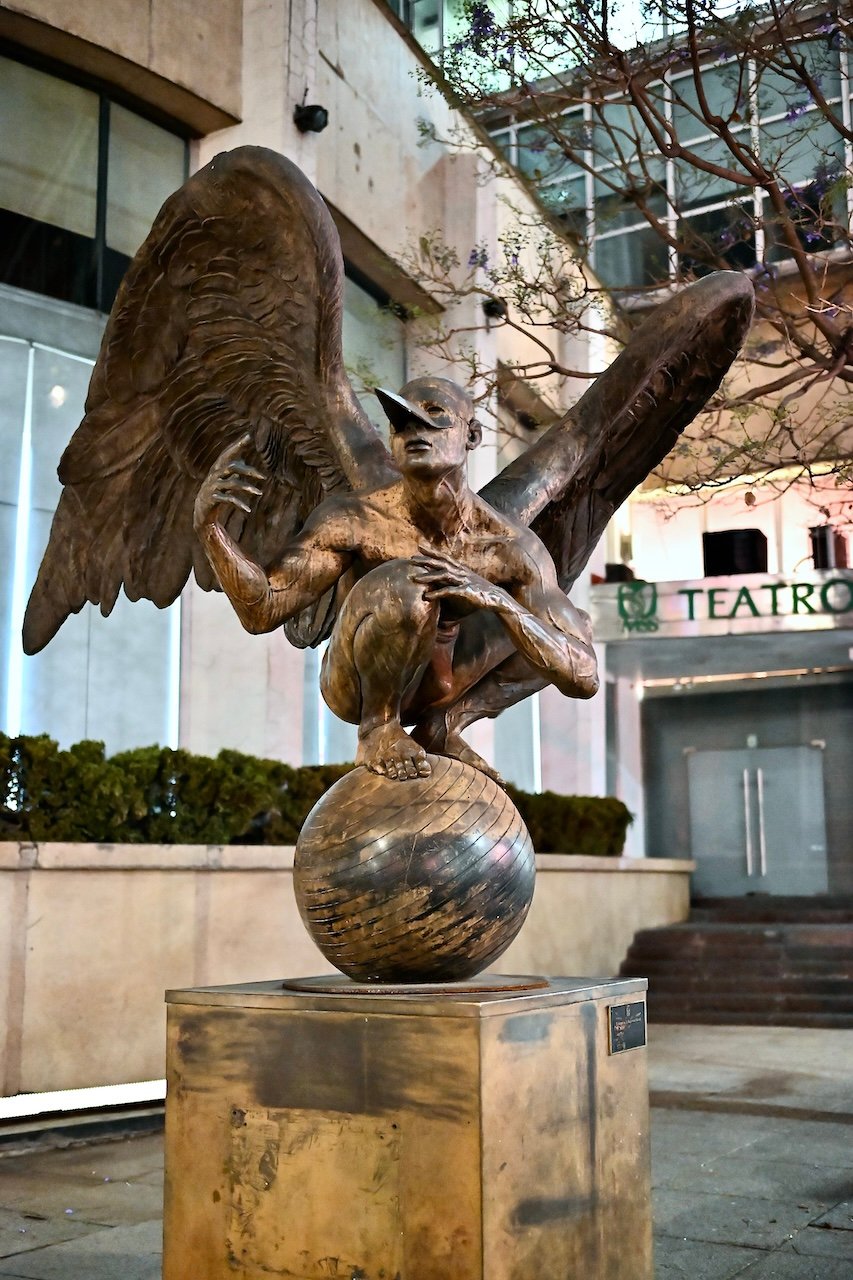
Coyoacán
Coyoacán is a charming and historic neighborhood located in the southern part of Mexico City, known for its cobblestone streets, colorful colonial buildings, and bohemian atmosphere. Once a separate village, Coyoacán has retained much of its original character and remains a popular destination for locals and tourists alike. Some of the key attractions in Coyoacán include:
-
Frida Kahlo Museum (Casa Azul): This iconic museum is located in the former home of renowned Mexican artist Frida Kahlo and showcases her life, artwork, and personal belongings, offering insight into her fascinating life and legacy.
- Coyoacán Plaza and Market: The main square of Coyoacán is a lively hub of activity, surrounded by cafes, restaurants, and shops, as well as a traditional market offering fresh produce, handicrafts, and souvenirs.
- Leon Trotsky Museum: Housed in the former home of Russian revolutionary Leon Trotsky, this museum explores his time in exile in Mexico and his contributions to the political landscape of the 20th century.
- Jardín Centenario: This charming park is a popular spot for locals to relax and socialize, with tree-lined pathways, benches, and a fountain, as well as nearby cafes and eateries.
- Casa de Cortés: This historic mansion dates back to the 16th century and is one of the oldest buildings in Coyoacán, offering a glimpse into the colonial history of the neighborhood.
Coyoacán is a picturesque and vibrant neighborhood with a rich cultural heritage, making it a fantastic place to stay for visitors looking to immerse themselves in the history and charm of Mexico City. The neighborhood offers a range of accommodation options, including boutique hotels, bed and breakfasts, and vacation rentals, providing travelers with a comfortable and convenient base for exploring the city. While Coyoacán is generally safe and welcoming, visitors should exercise caution, especially in crowded areas and at night, and take standard precautions to ensure a pleasant and enjoyable stay.
2024 Coyoacan, Mexico City Travel Guide >
Top Restaurants in Coyoacán >
Xochimilco
Xochimilco is a historic and culturally rich neighborhood located in the southern part of Mexico City, known for its iconic canals, floating gardens, and vibrant traditions. Once a pre-Hispanic settlement, Xochimilco has preserved its indigenous roots and is recognized as a UNESCO World Heritage Site. The main attraction of Xochimilco is its namesake canals. The Xochimilco Canals were originally used for transportation and agriculture by the Aztecs. Today, visitors can take colorful trajineras (traditional gondola-style boats) along the canals, enjoying picturesque views of the floating gardens, mariachi bands, and food vendors along the way.
Xochimilco offers a unique and immersive experience for visitors looking to explore Mexico City's cultural and natural heritage. While it may not be the most convenient place to stay in terms of proximity to the city center and other attractions, Xochimilco offers a tranquil and authentic atmosphere that is well worth experiencing. There are a few guesthouses and boutique hotels in the area, providing travelers with a peaceful and scenic retreat away from the hustle and bustle of the city. However, visitors should be aware that accommodation options may be limited compared to other neighborhoods in Mexico City, and transportation to and from Xochimilco can be time-consuming.
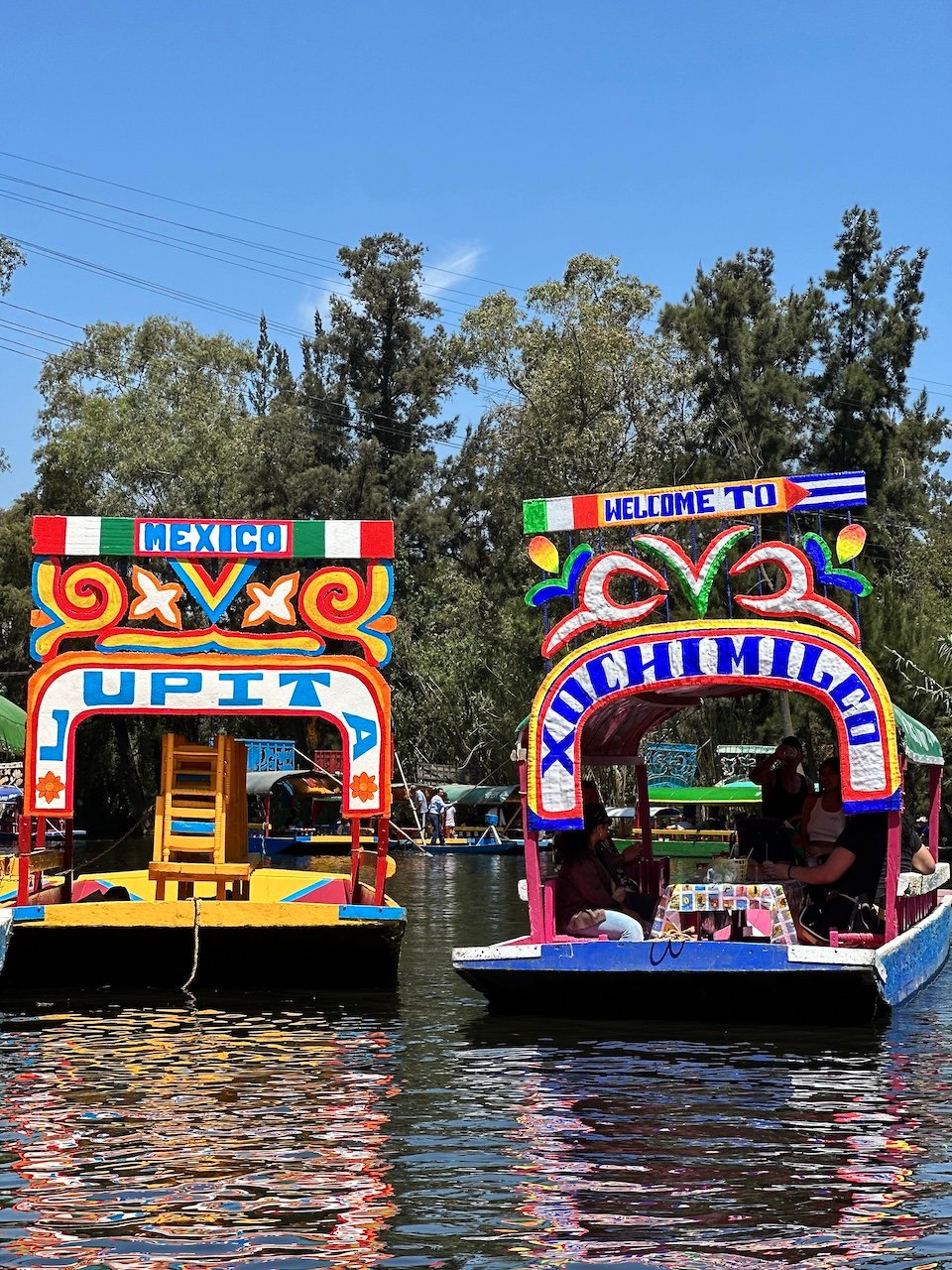

-

Mayan Temple Replica
National Museum of Anthropology
-

Margaritas
Azul Condesa
-

Giant Insect Sculptures
Chapultepec Park
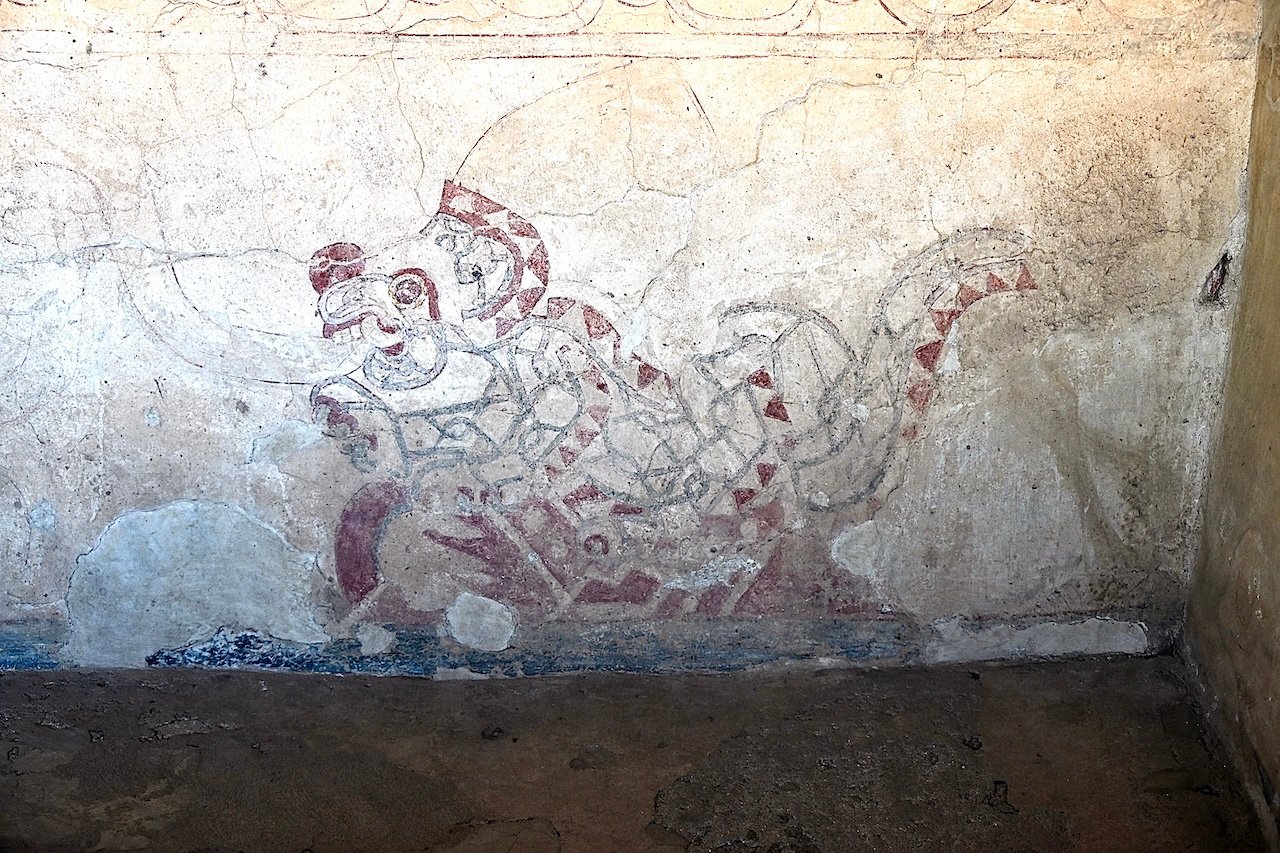
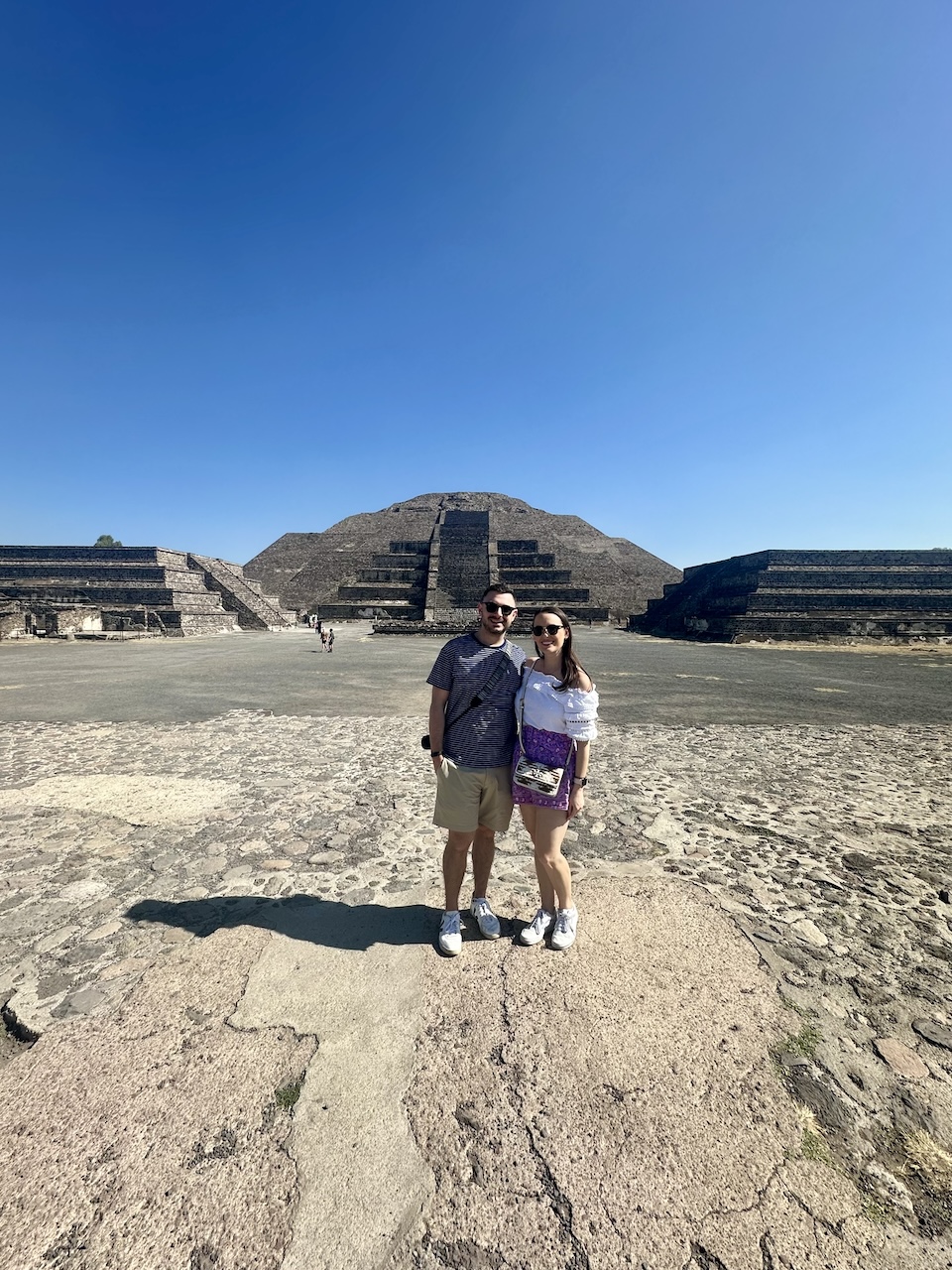
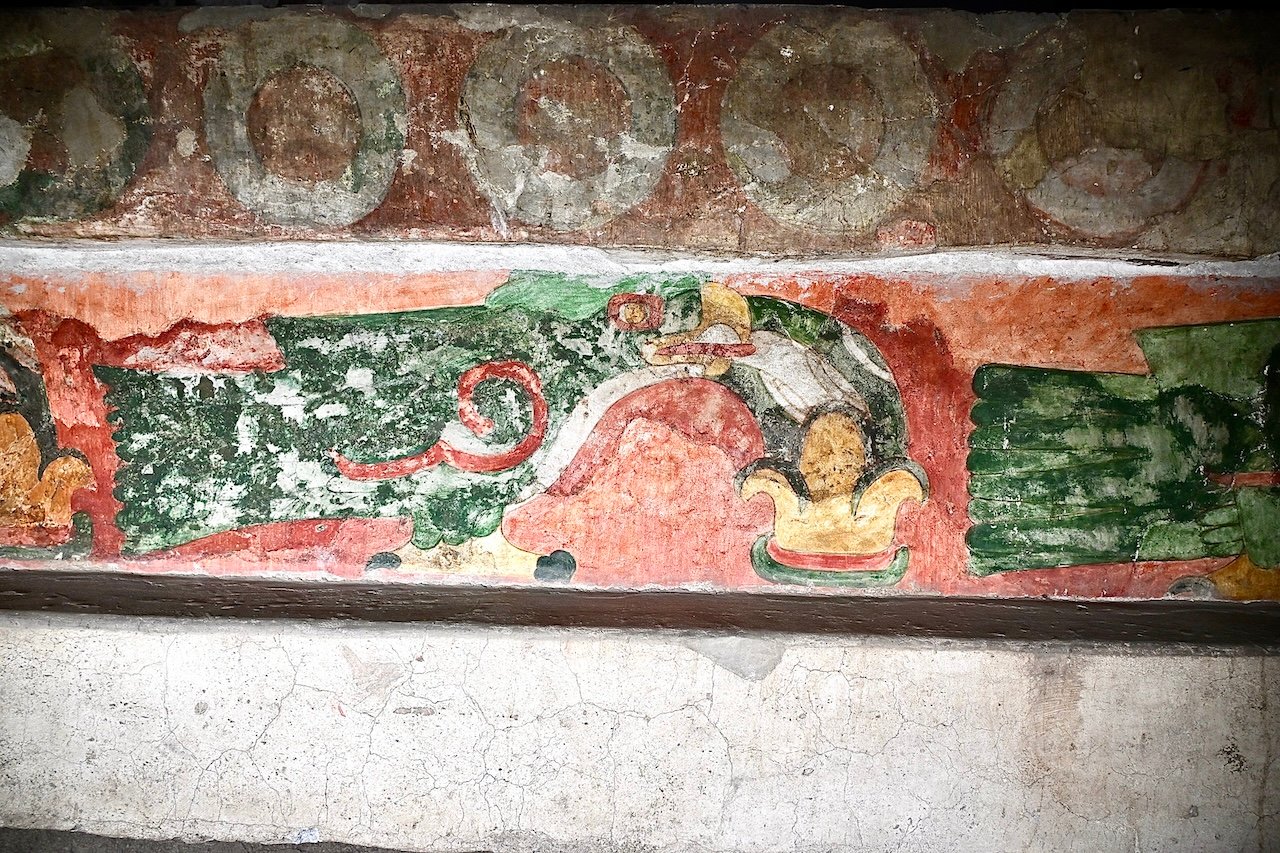
A Deep Dive: Teotihuacan
Most people are familiar with the Mayan pyramids of Chichén Itzá in Mexico's Yucatán Peninsula. However, another archeology site with impressive pyramids of its own and a history that is less than clear lies just outside of Mexico City: Teotihuacan.
Teotihuacan is one of the most significant archaeological sites in Mexico. It was once a thriving pre-Columbian city, estimated to have been established as early as 400 BC, but truly flourished between the 1st and 7th centuries AD. At its peak, it was one of the largest cities in the world, with an estimated population of more than 100,000 people.
Key features of Teotihuacan include the Pyramid of the Sun, the Pyramid of the Moon, the Temple of the Feathered Serpent (also known as the Temple of Quetzalpapálotl), the Palace of Quetzalpapálotl, and the Palace of the Jaguars. These monumental structures, along with the city's meticulously planned layout and impressive urban infrastructure, attest to the advanced engineering and architectural skills of its inhabitants.
Teotihuacan is renowned for its vibrant mural art, found in various structures throughout the city. The murals provide valuable insights into the beliefs, social structure, and cultural practices of the Teotihuacan civilization. Additionally, Teotihuacan was a major center for the production and distribution of obsidian, a volcanic glass used for tools, weapons, and ritual objects. The city's strategic location near sources of obsidian allowed it to control trade networks extending across Mesoamerica.
Teotihuacan's influence extended over much of Mesoamerica, as evidenced by the presence of its architectural and artistic elements in distant regions. Elements of Teotihuacan art and architecture can be found in later Mesoamerican civilizations, such as the Maya and Aztecs, indicating the enduring impact of this ancient metropolis. The name Teotihuacan is Aztec in origin, meaning "birthplace of the gods," and given after the collapse of Teotihuacan. The Aztecs revered Teotihuacan as a sacred pilgrimage site, a place of spiritual significance that endured up until the arrival of the Spanish in Mexico in the 16th century.
Despite its importance, much about the culture and governance of Teotihuacan remains shrouded in mystery, as the civilization left behind no written records. The city's decline and eventual abandonment around the 8th century AD are still debated amongst archaeologists. Factors such as environmental degradation, social unrest, and/or invasion by neighboring groups are proposed explanations. Today, Teotihuacan is a UNESCO World Heritage Site and a popular tourist destination, offering visitors a glimpse into the ancient past of Mexico.
Visiting Teotihuacan was the highlight of our trip to Mexico City. We booked a phenomenal a half-day tour via our affiliate partner, GetYourGuide, which included round-trip transportation from our hotel, admission to the site, bottled water and snacks, and a guided tour of Teotihuacan. If you book an experience or tour through our GetYourGuide affiliate link, we may earn a small commission.
Want to learn more about Teotihuacan? Check out the UNESCO World Heritage Convention's website.
Mexico City Travel Guide: Additional Resources for Visiting Mexico's Capital City
One Last Note...
Altitude Sickness
Altitude sickness, also known as acute mountain sickness (AMS), can affect individuals traveling to Mexico City, which sits at an elevation of roughly 7,350 feet (2,240 meters) above sea level, particularly if they are arriving in Mexico City from sea level. Symptoms of altitude sickness can include headache, nausea, vomiting, dizziness, fatigue, and difficulty sleeping.
If you experience altitude sickness in Mexico City, there are a few of measures you can take to help alleviate symptoms:
- Stay hydrated by drinking plenty of water, while avoiding alcohol and caffeine consumption.
- Avoid strenuous physical activity, especially during the first few days in Mexico City.
- Treat headaches with ibuprofen and take motion-sickness medication like dimenhydrinate (Dramamine) to help with nausea.
- If you have experienced altitude sickness in the past, consider getting a prescription for medication like acetazolamide (Diamox) to help prevent altitude sickness symptoms before you arrive in Mexico City. Just be sure to consult a healthcare professional before taking any medication.
-

Aztec Sun Stone
National Museum of Anthropology
-

Disk of Death
National Museum of Anthropology
-

Stone Serpent Head Statue
Templo Mayor
Looking for more Mexico City content?
Check out the Jetset Seeker Blog!
Our Mexico City Travel Guide & Trip Planning Resources
Curious about the resources that shaped our Mexico City journey? Dive into the links below for additional insights and valuable information we used to plan our own unforgettable trip.
- Lonely Planet Mexico 18th Edition (2023) >
- Tripadvisor Things to Do in Mexico City >
- CN Traveler - Mexico City >
- The Atlas Obscura Guide To Mexico City >
- Time Out: Your Ultimate Guide to Mexico City >
Looking for more information on Mexico? From when to visit, popular souvenirs, crime and safety warnings, and more, check out our Mexico Travel Guide, linked below.
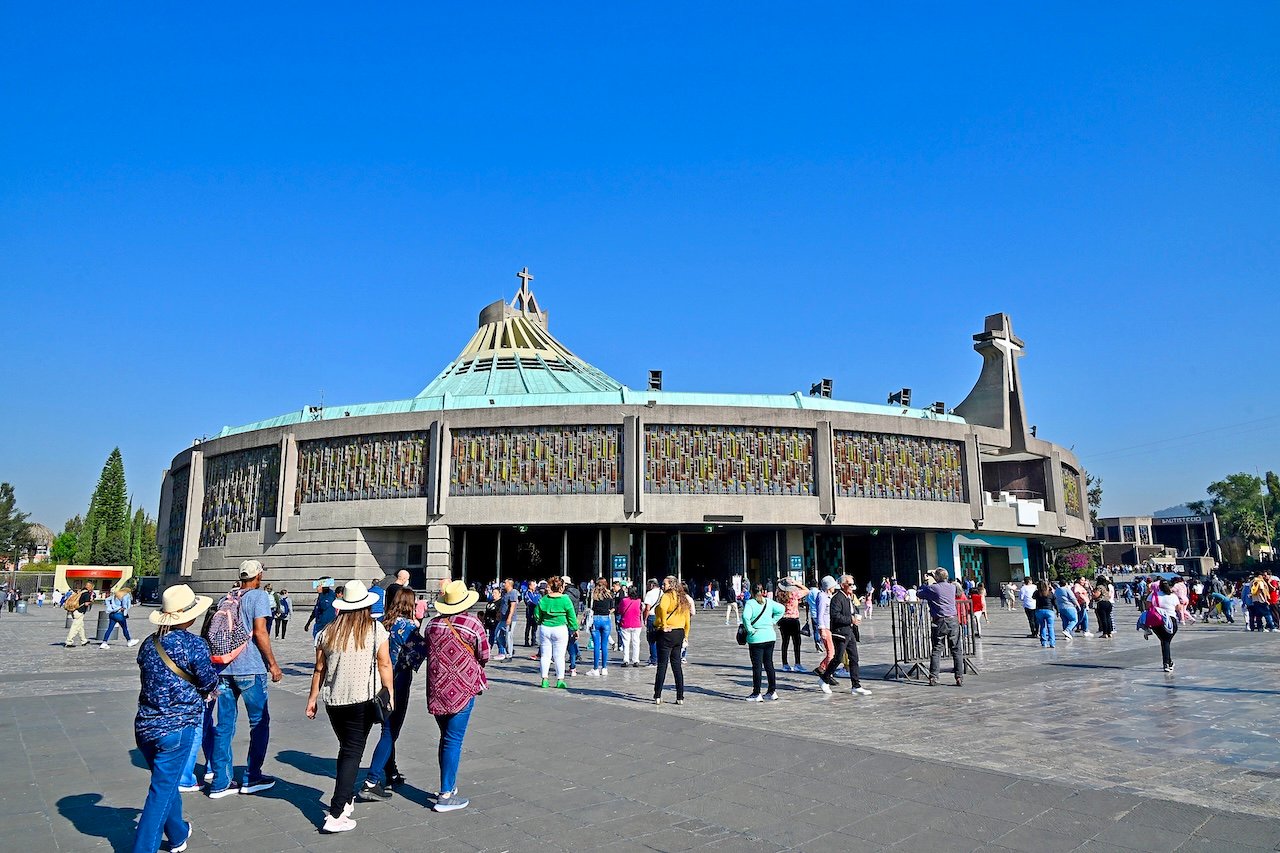
What other honeymooners say
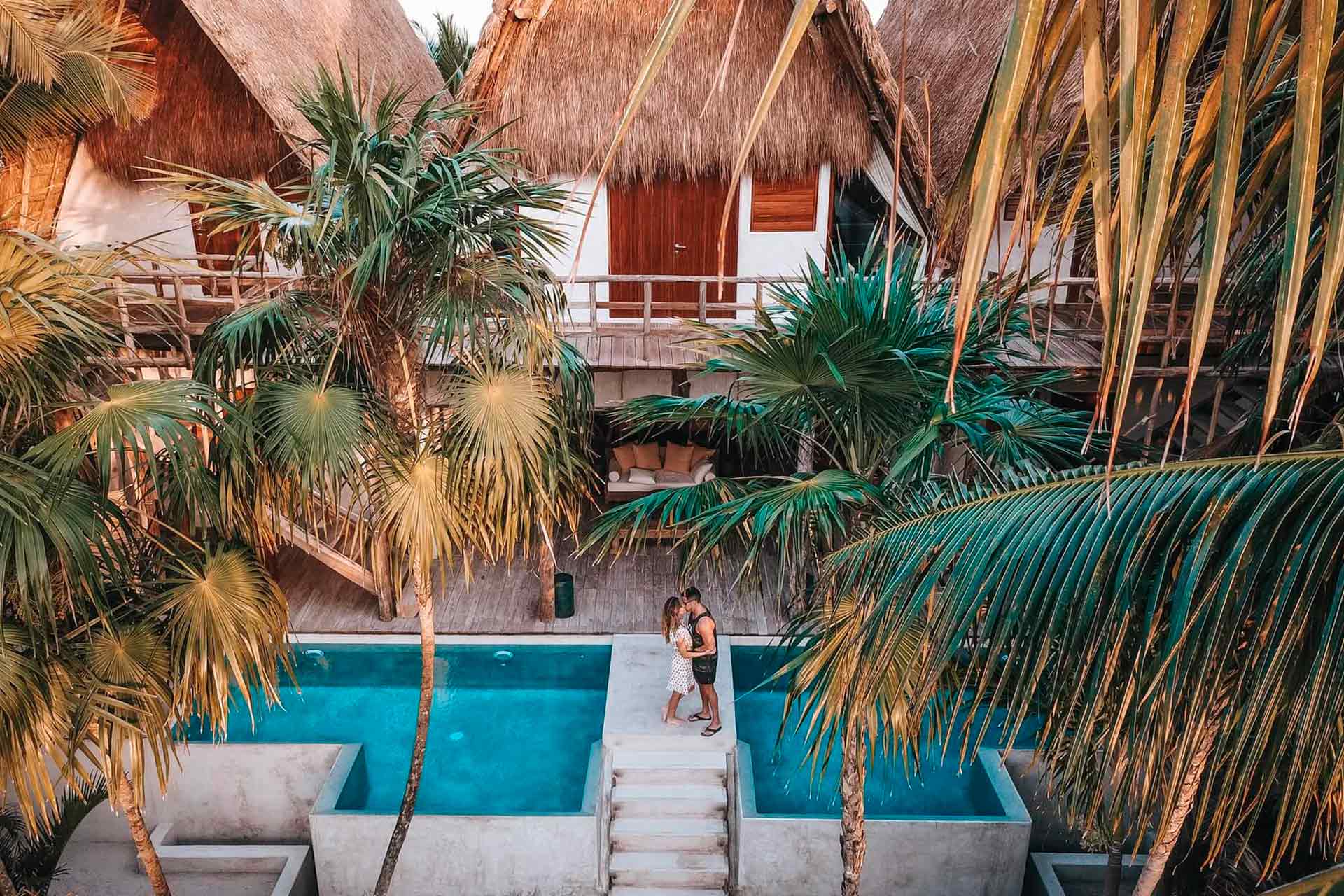

Laboris nisi ut aliquip ex ea commodo consequat. Duis aute irure dolor in reprehenderit in voluptate velit esse cillum dolore eu fugiat nulla pariatur. Excepteur sint occaecat cupidatat non proident, sunt in culpa qui officia deserunt mollit anim id est laborum.”

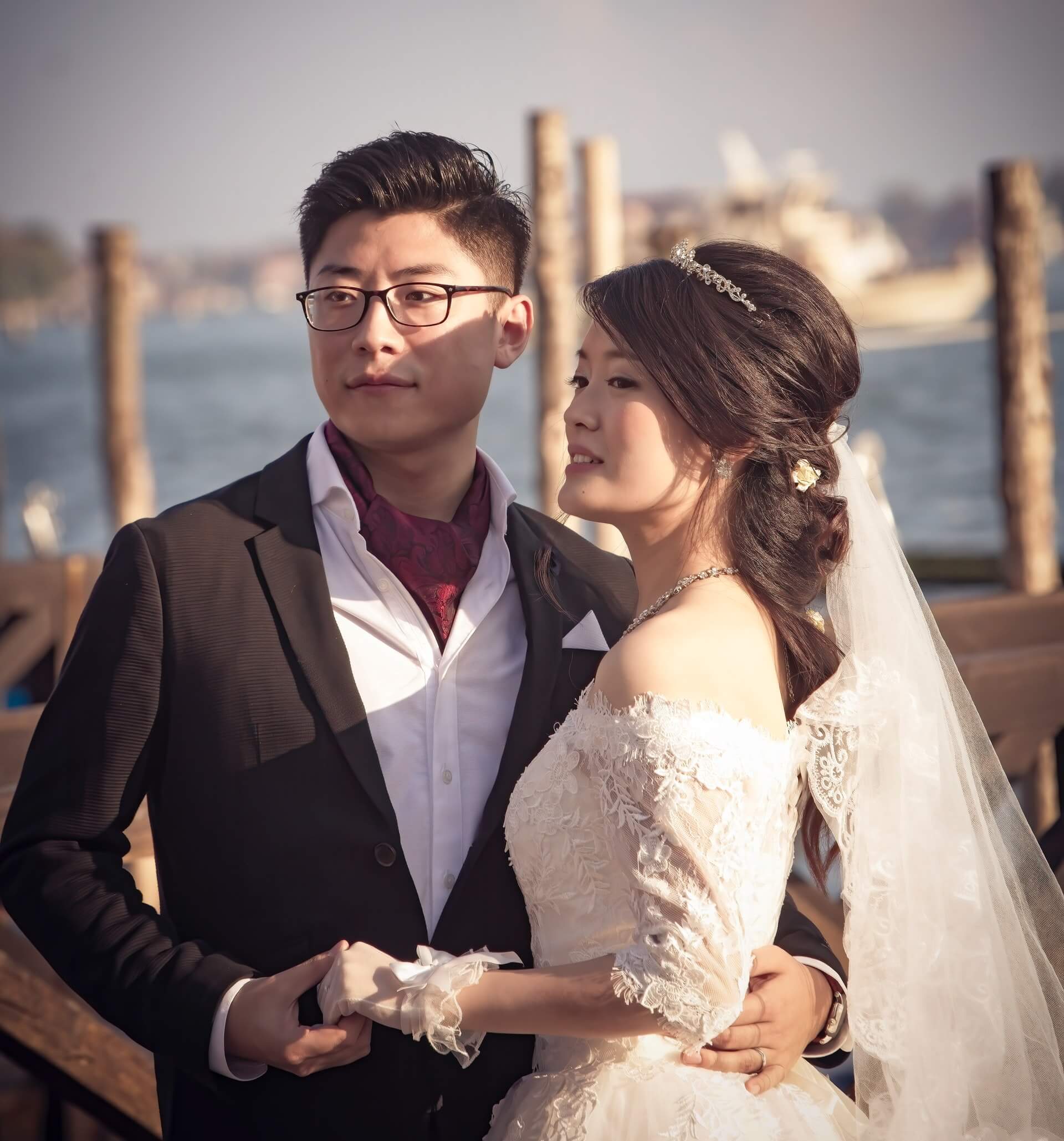
Laboris nisi ut aliquip ex ea commodo consequat. Duis aute irure dolor in reprehenderit in voluptate velit esse cillum dolore eu fugiat nulla pariatur. Excepteur sint occaecat cupidatat non proident, sunt in culpa qui officia deserunt mollit anim id est laborum.”
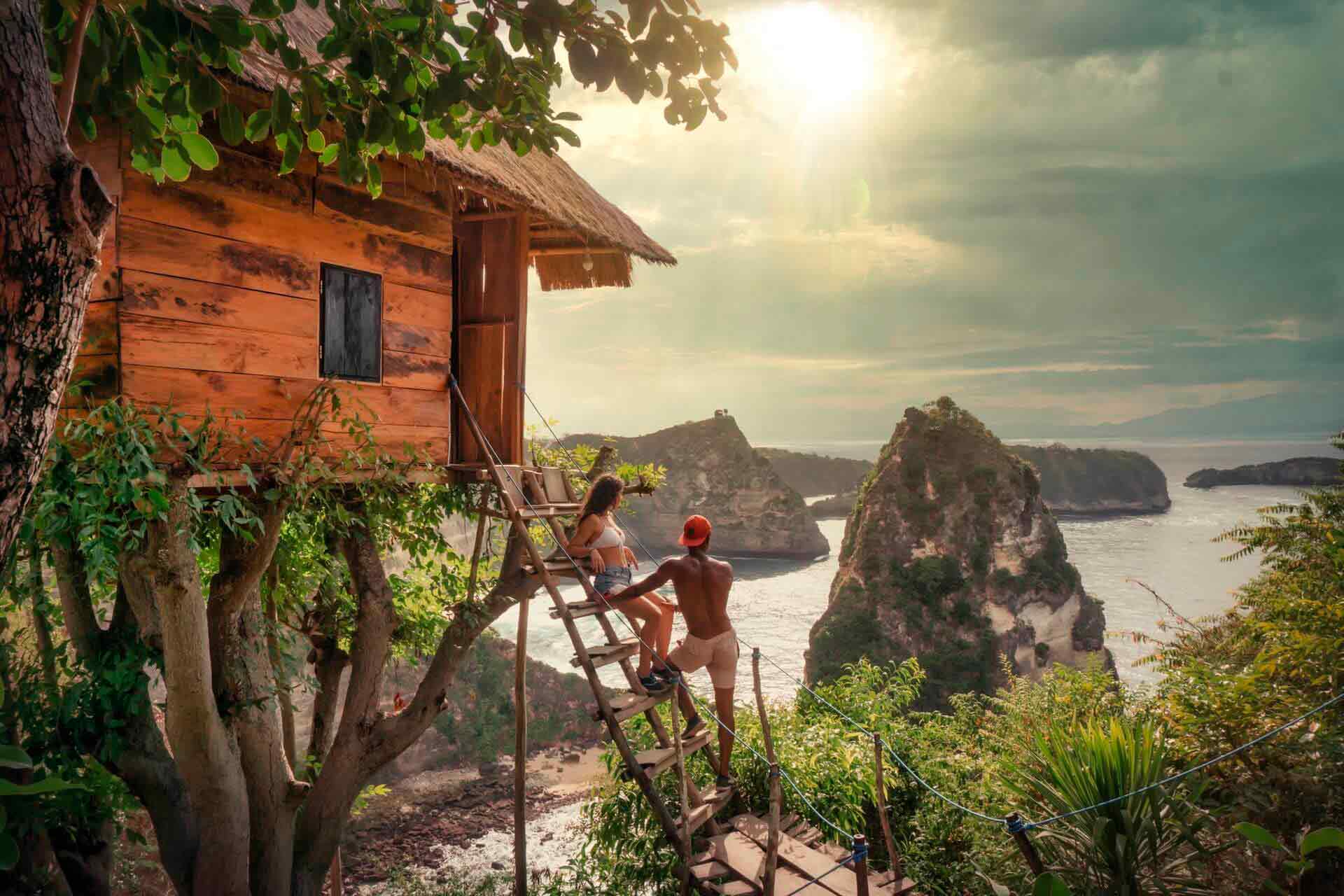
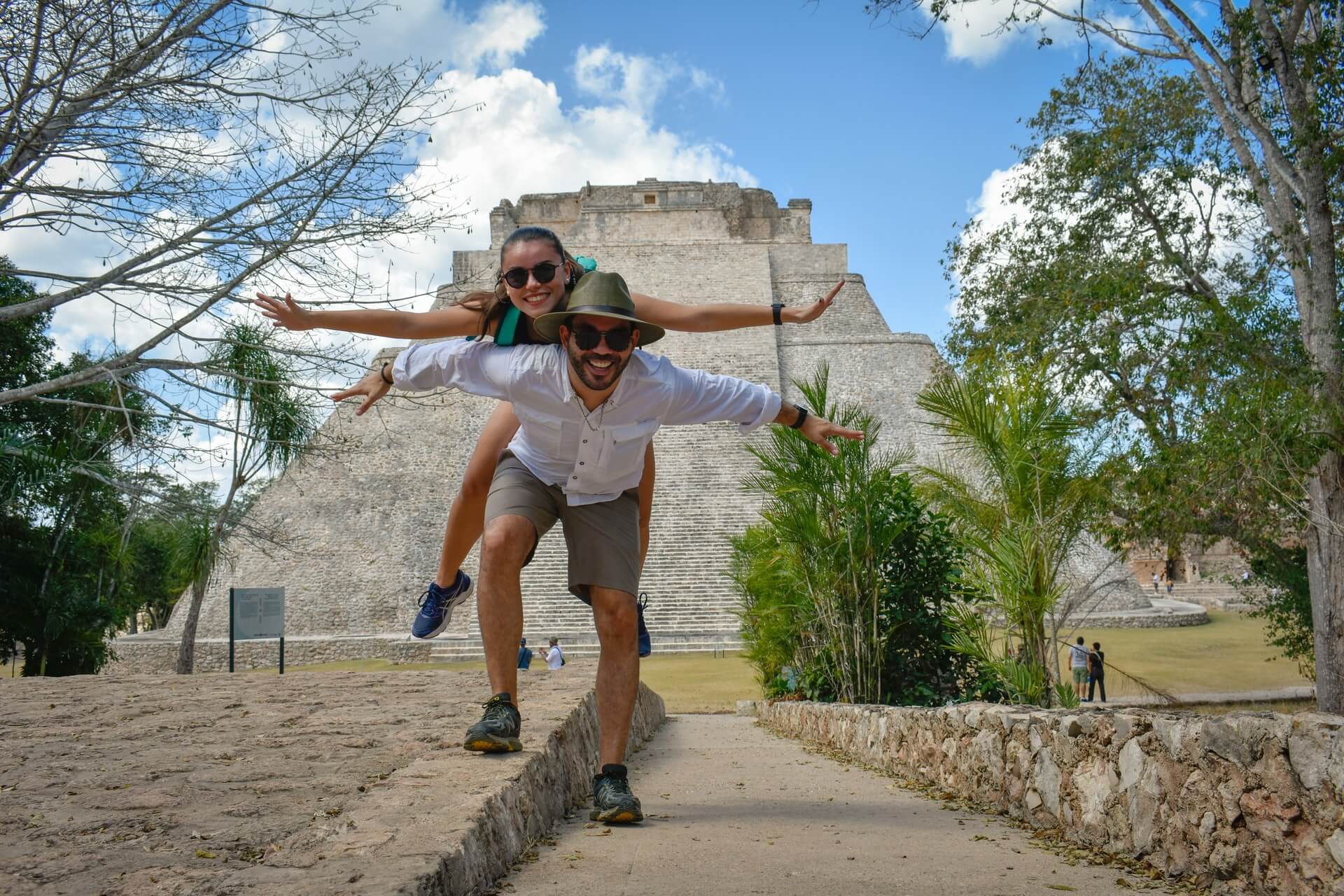
Laboris nisi ut aliquip ex ea commodo consequat. Duis aute irure dolor in reprehenderit in voluptate velit esse cillum dolore eu fugiat nulla pariatur. Excepteur sint occaecat cupidatat non proident, sunt in culpa qui officia deserunt mollit anim id est laborum.”
Tokyo Itineraries


%20(1).png?width=3690&height=2079&name=Jetset%20Seeker%20Logo%20(Banner)%20(1).png)





